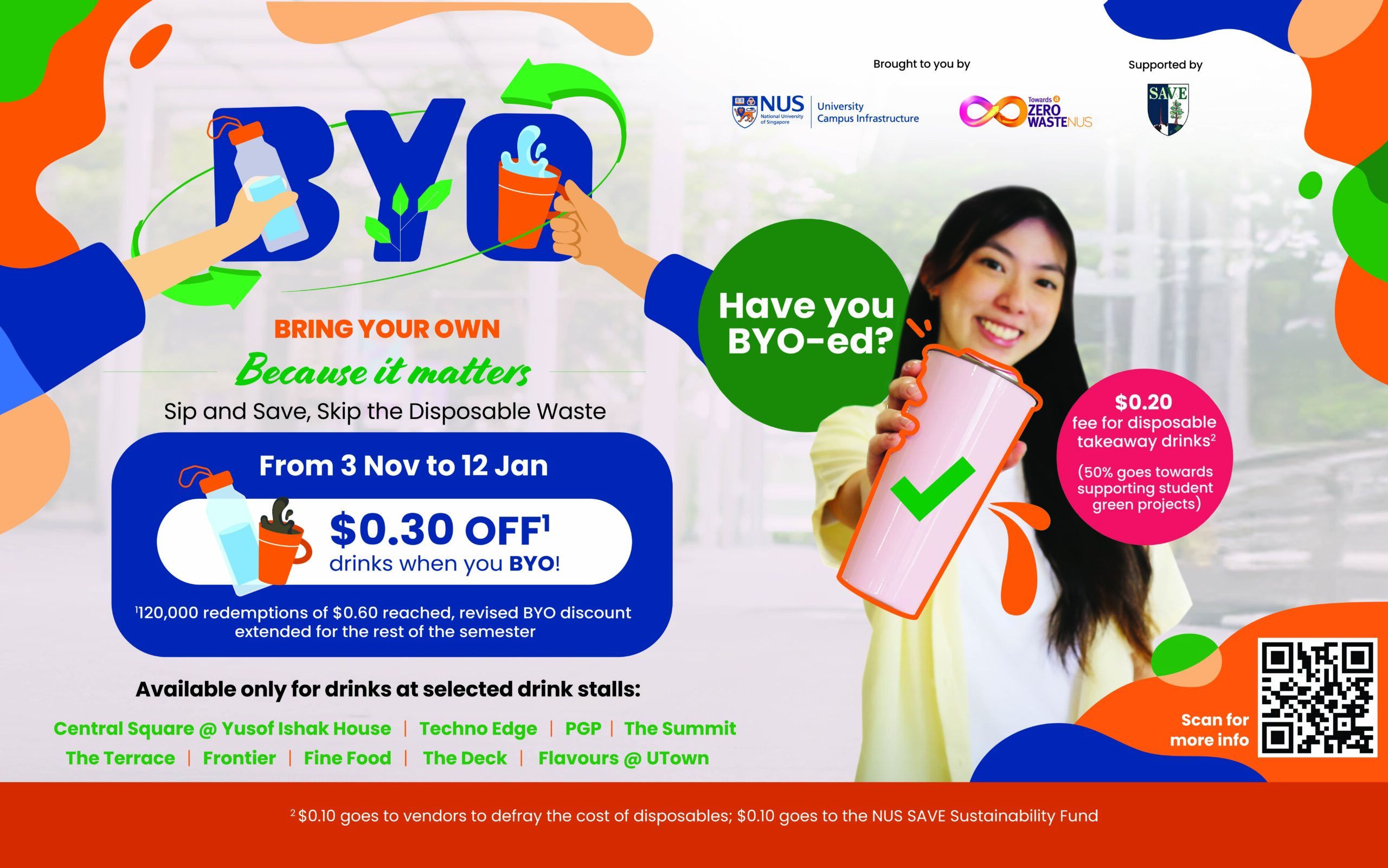
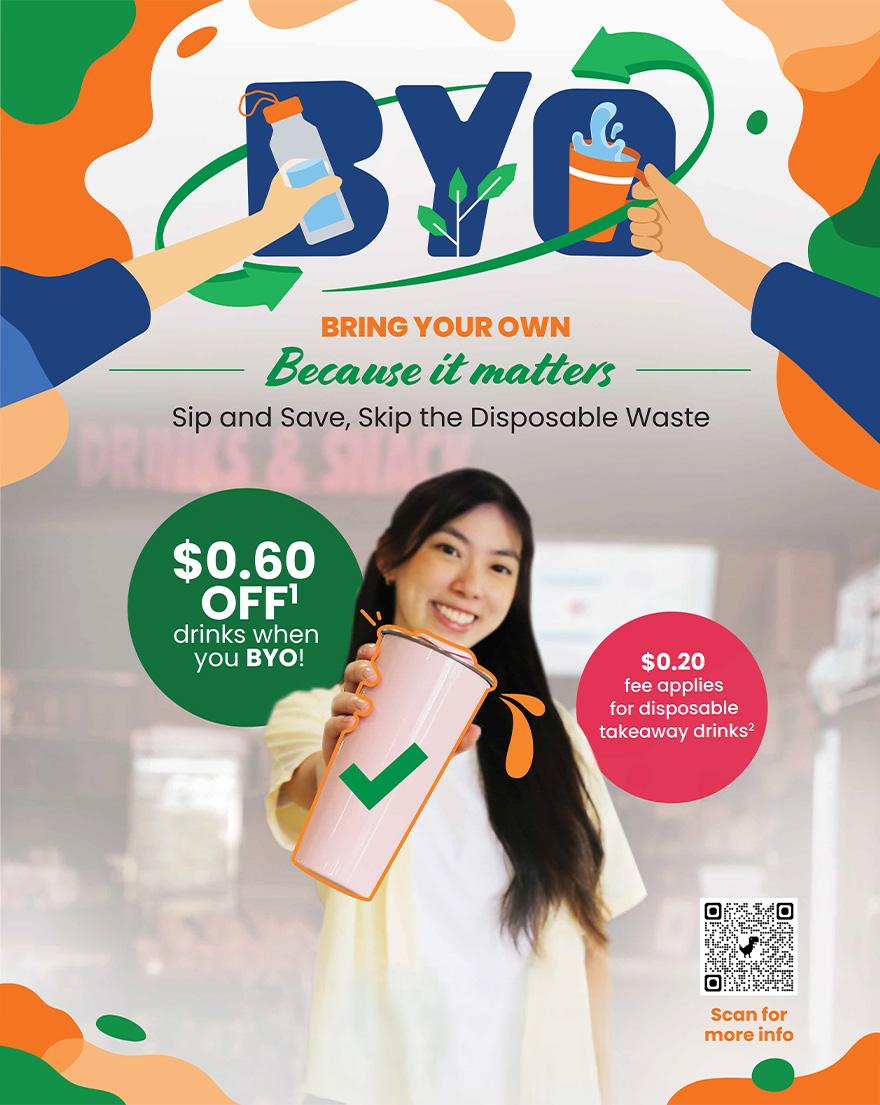
Waste disposed on campus has grown 73% from 2925 tonnes in FY2021 to 5069 tonnes in FY2024
Takeaway disposables is 13%* of waste disposed of in NUS – and it can be avoided with reusables
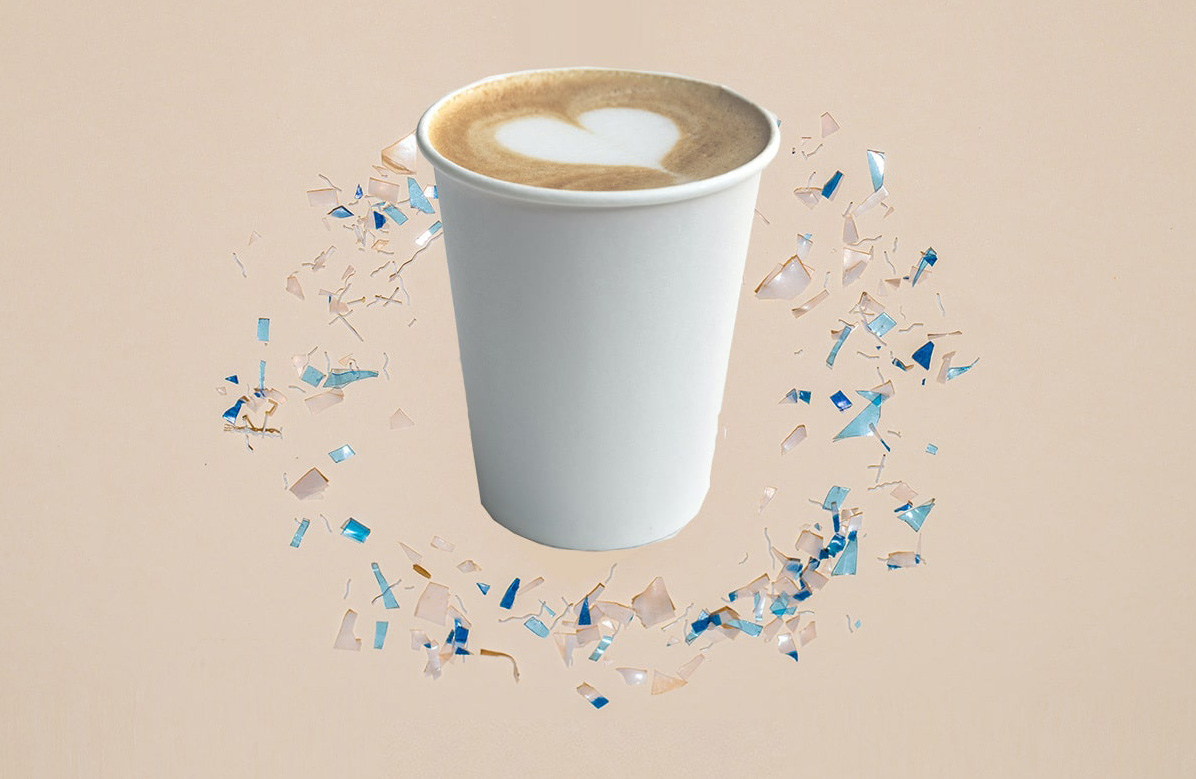
I don’t own a reusable tumbler or bottle.
You may get one for free (or cheap) through uNivUS Marketplace app ! Browse listings under “Food & Drink Containers” category, to find spare bottles or tumblers donated by the NUS community.

Chua Siew Chin
Senior Lecturer, Biological Sciences

Nadya Heryanto
Treasurer, NUS SAVE
Year 4, Accountancy

Chrisye Cheong
Member, NUS SAVE
Year 2, Finance

500ml Stainless Steel Bottle
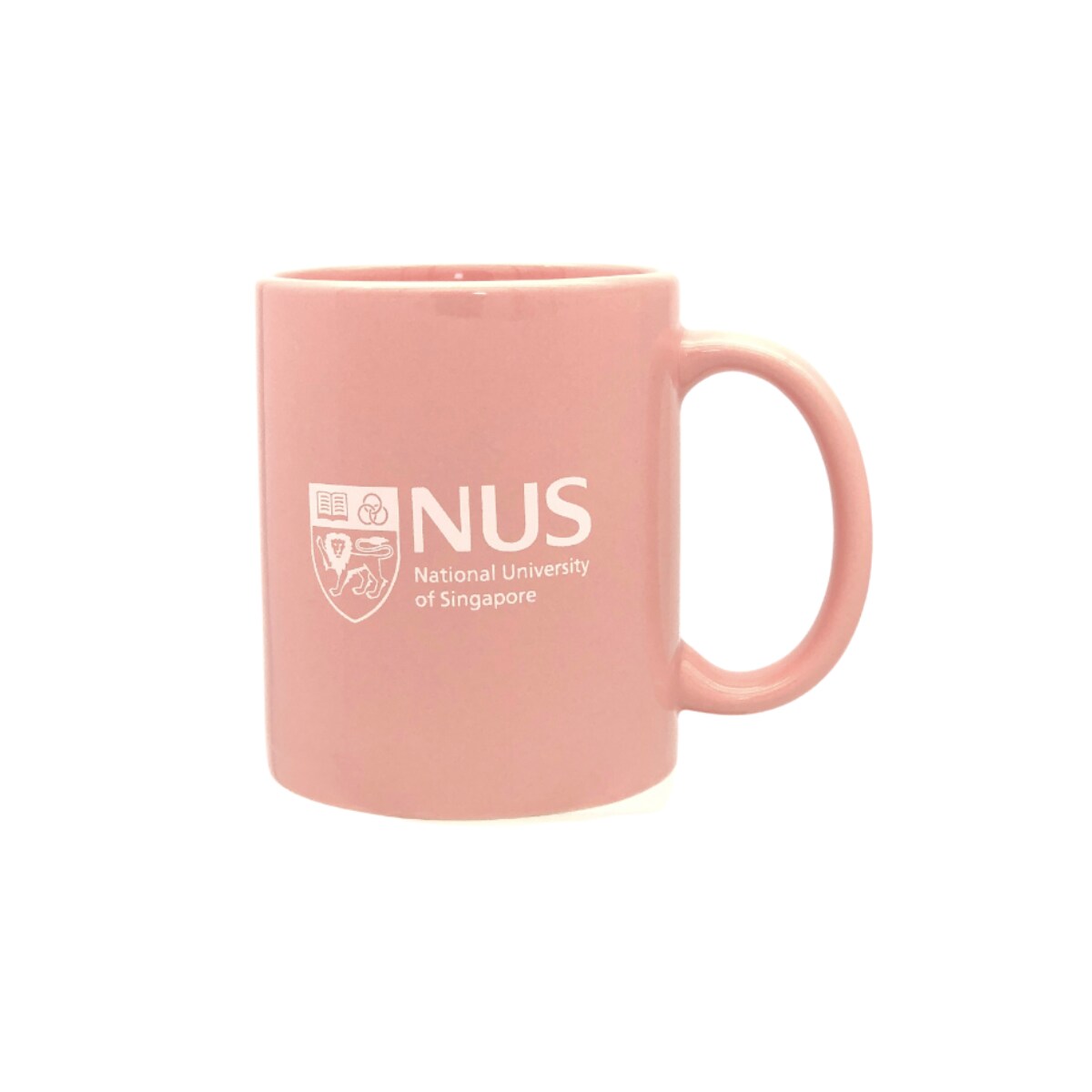
Ceramic Mug
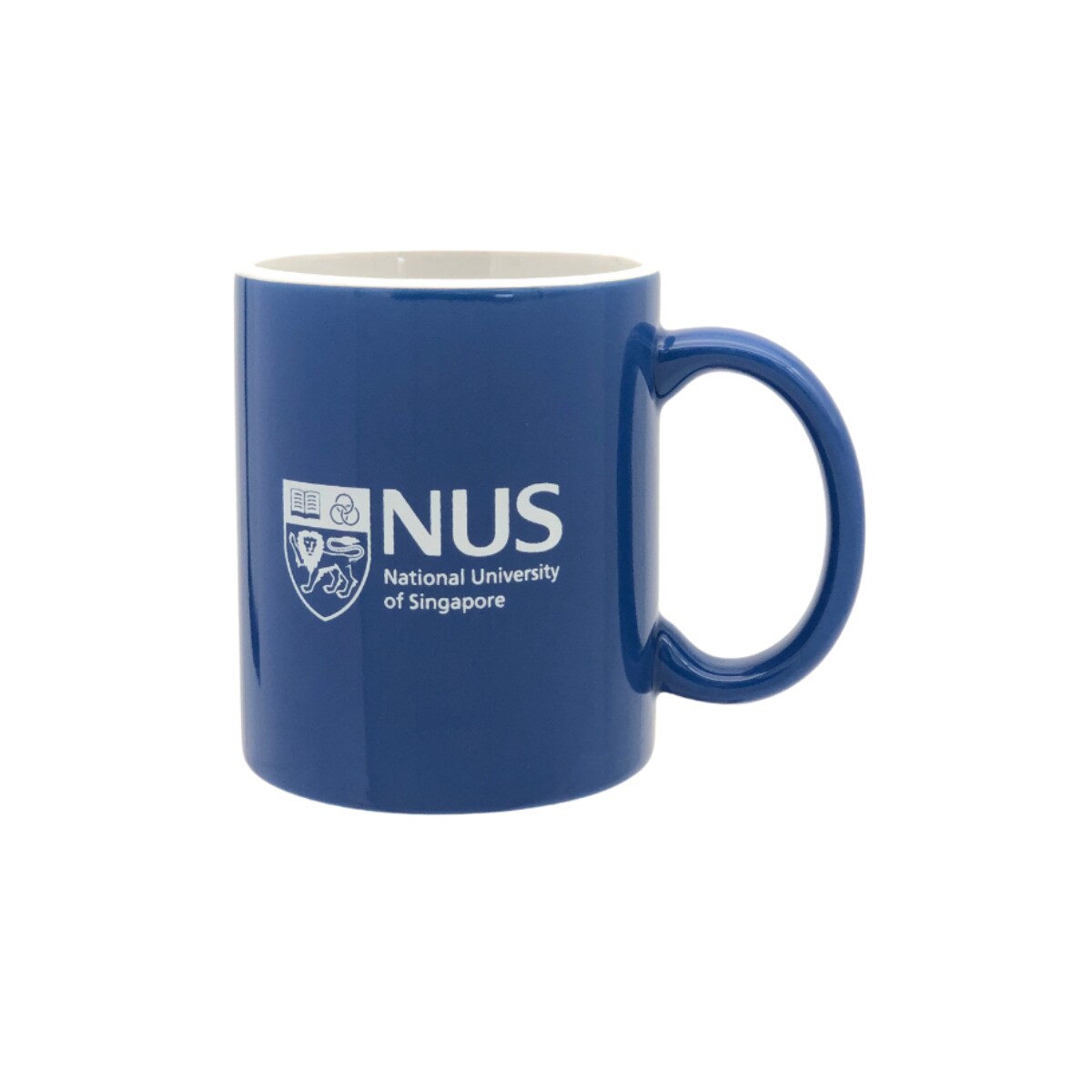
Ceramic Mug Inner White Outer Coloured

Coloured Gradient Stainless Steel Tumbler 473ml with Metal Straw
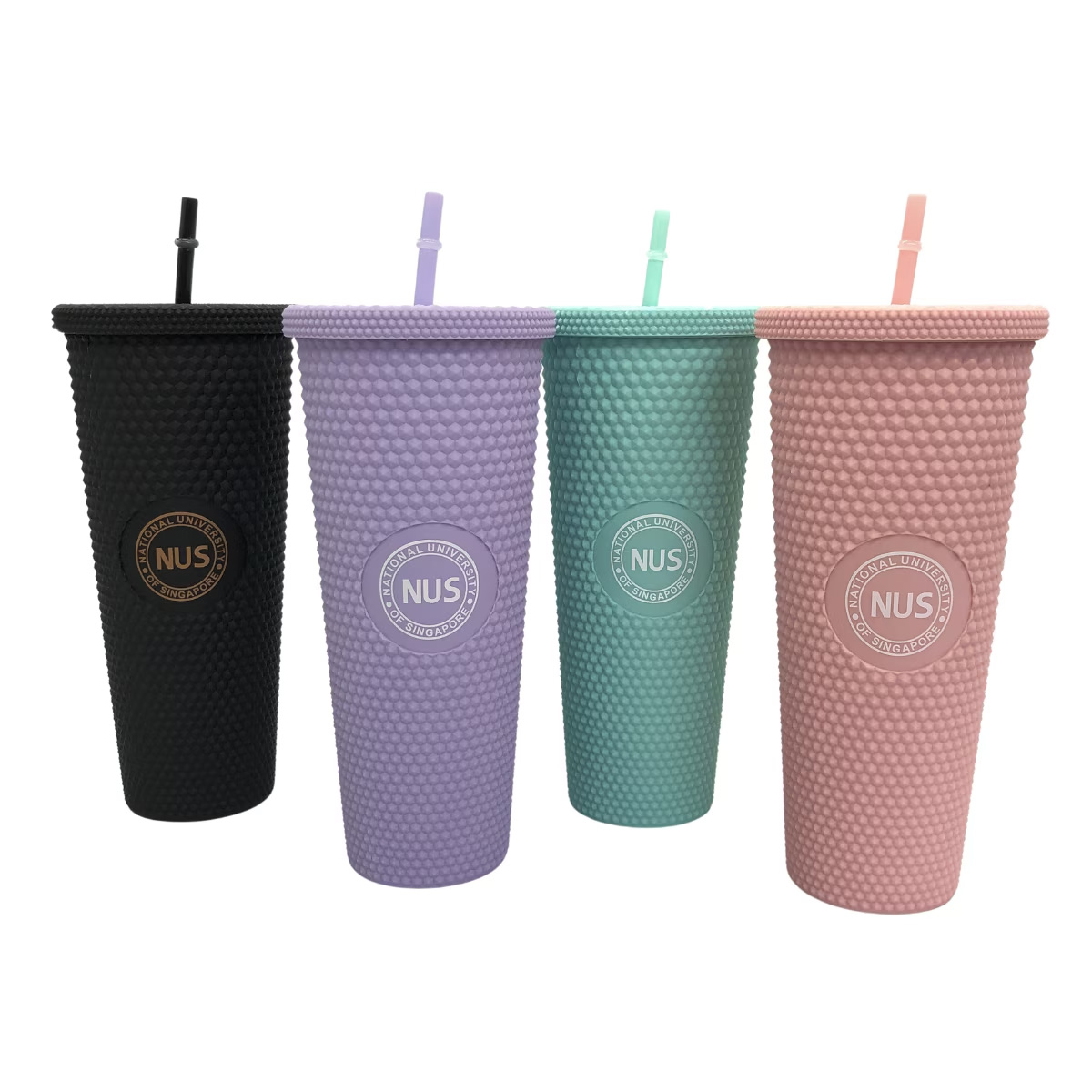
Durian Tumbler 720ml with Straw

Inner Coloured Ceramic Mug
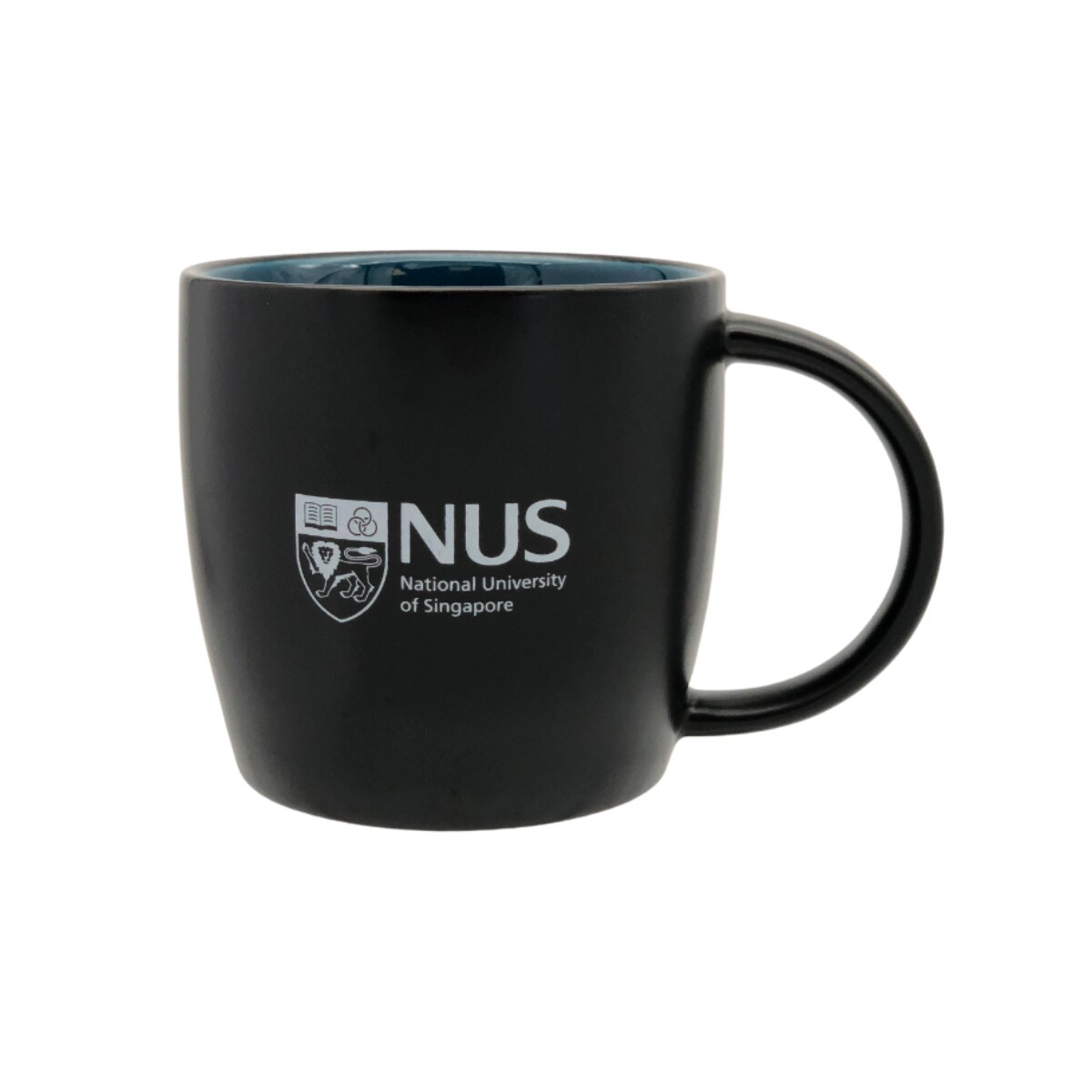
Mug with Matte Outer Finish
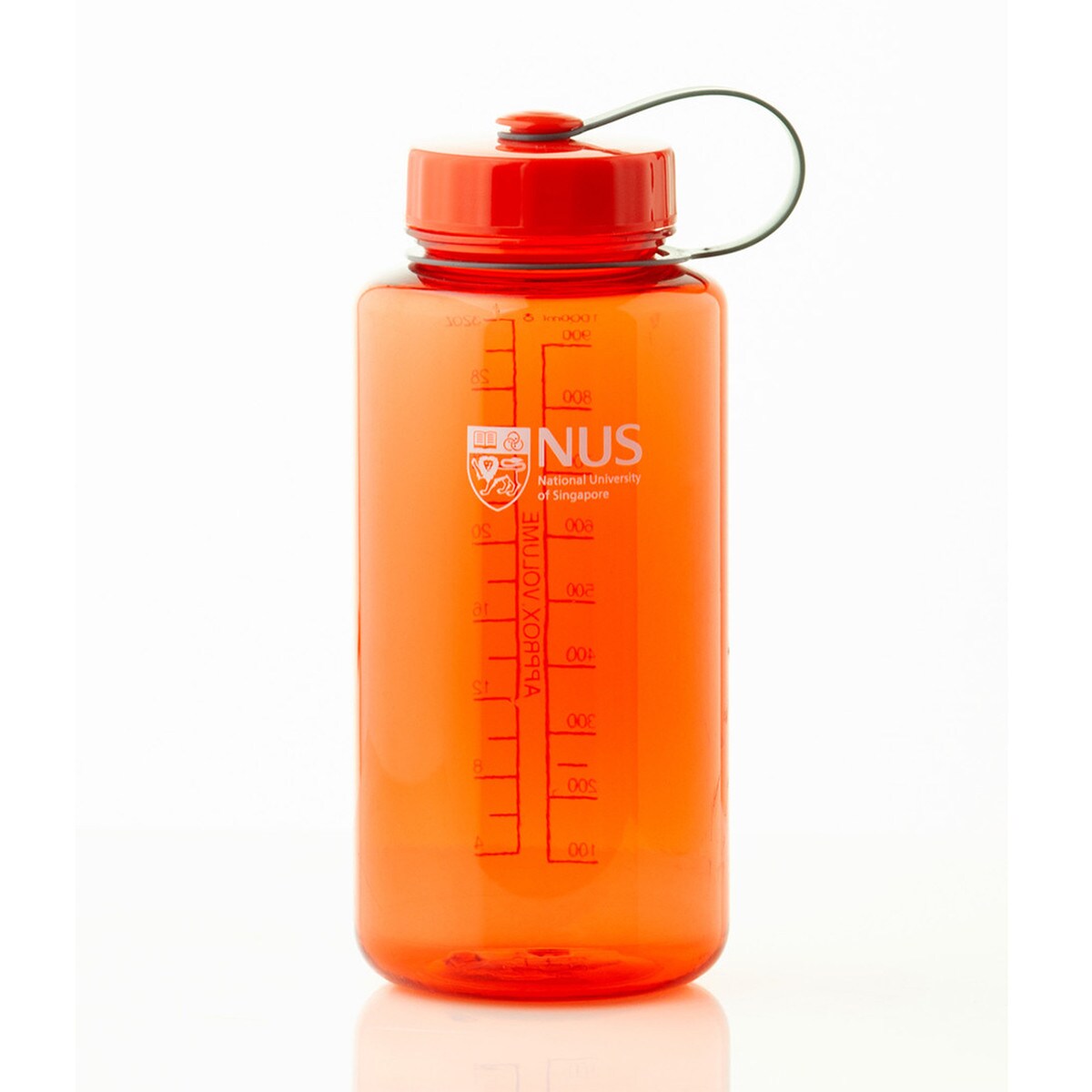
PC Bottle 1000ml (FG-168B Classic)
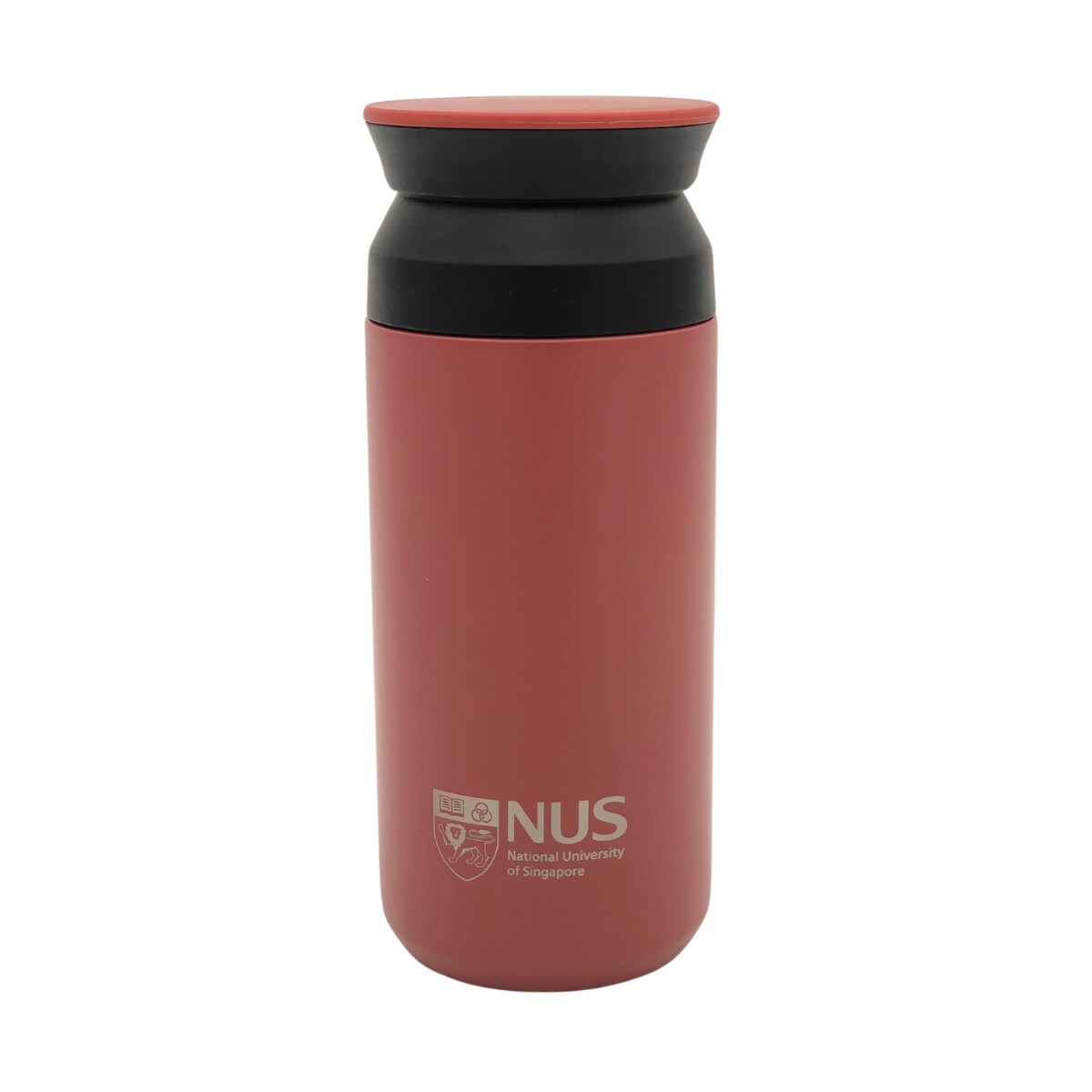
Stainless Steel Tumbler 350ml
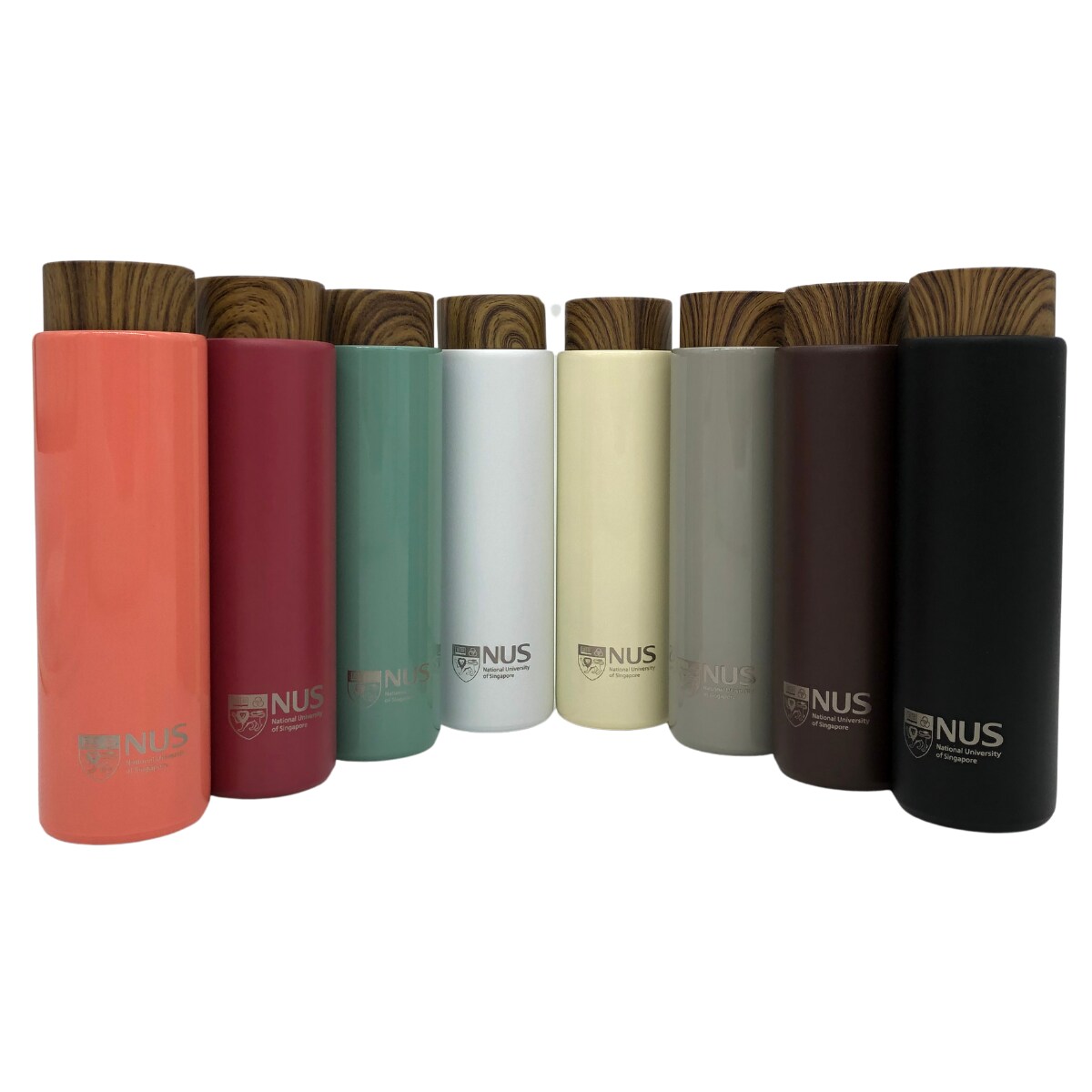
Stainless Steel Tumbler 400ml
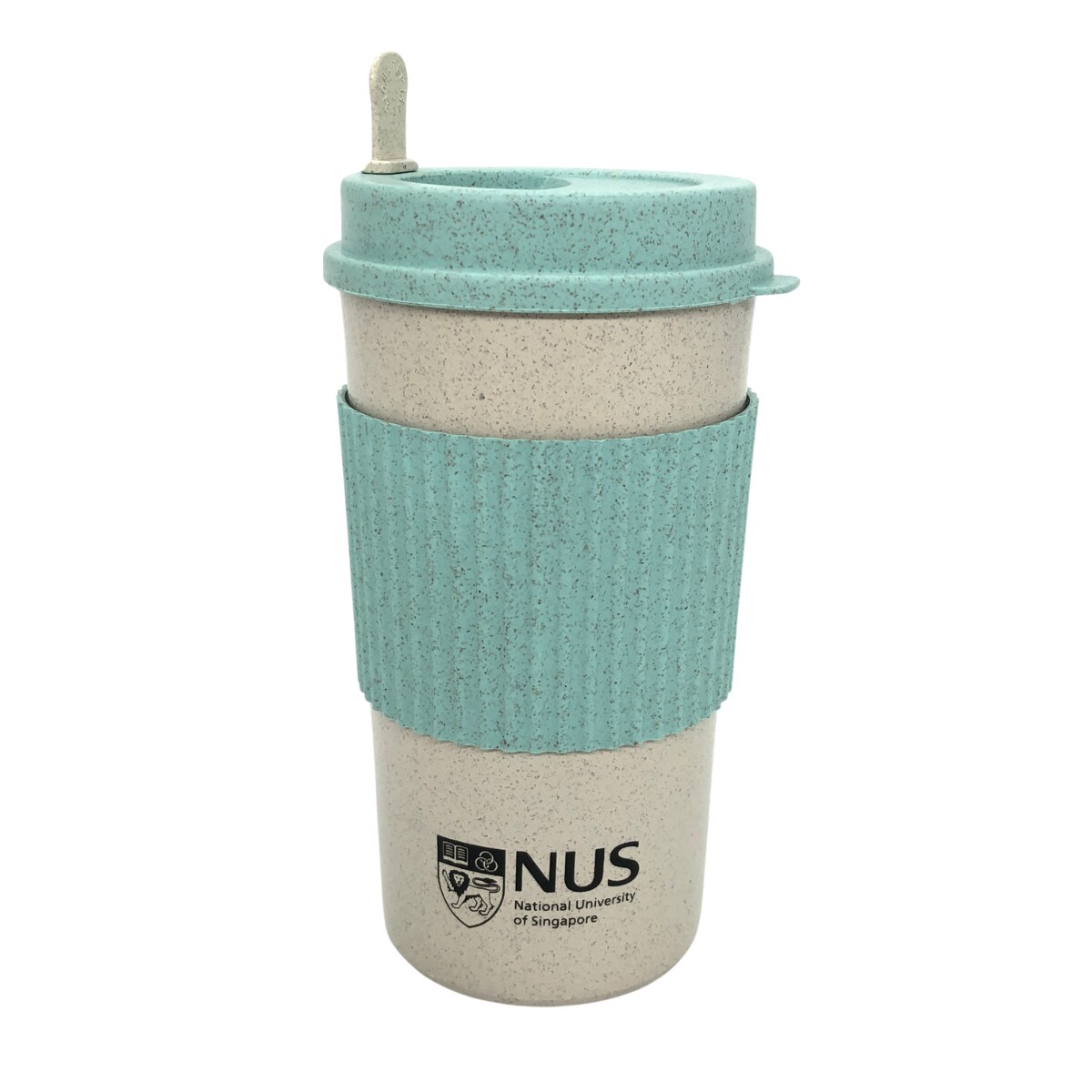
Wheat Cup 450ml
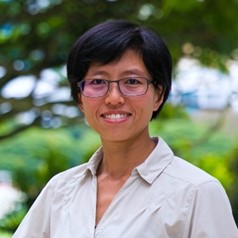
“Single-use items not only waste our limited resources of water, energy and materials, they also create unnecessary usage of chemicals that could harm human health, as in the case of PFAS in paper straws. Their disposal also require more resources and could further pollute the environment.”
Chua Siew Chin
Senior Lecturer, Biological Sciences
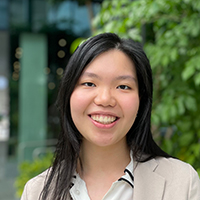
“Knowing I’m avoiding microplastics in my food and drinks, helping reduce waste, and sometimes even getting discounts – it just makes sense to bring my own reusable!”
Nadya Heryanto
Co-President, NUS Student Association for Visions of the Earth (SAVE) 32nd Management Committee 2024/2025
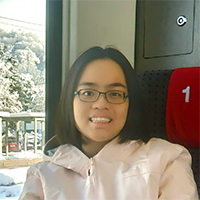
“Disposable single-use plastics may seem convenient, but they break down into microplastics that pollute our food, water, and environment. That’s why I use reusables. It’s a simple effort that can make a real difference over time.”
Chrisye Cheong
President, NUS Student Association for Visions of the Earth (SAVE) 33rd Management Committee 2025/2026
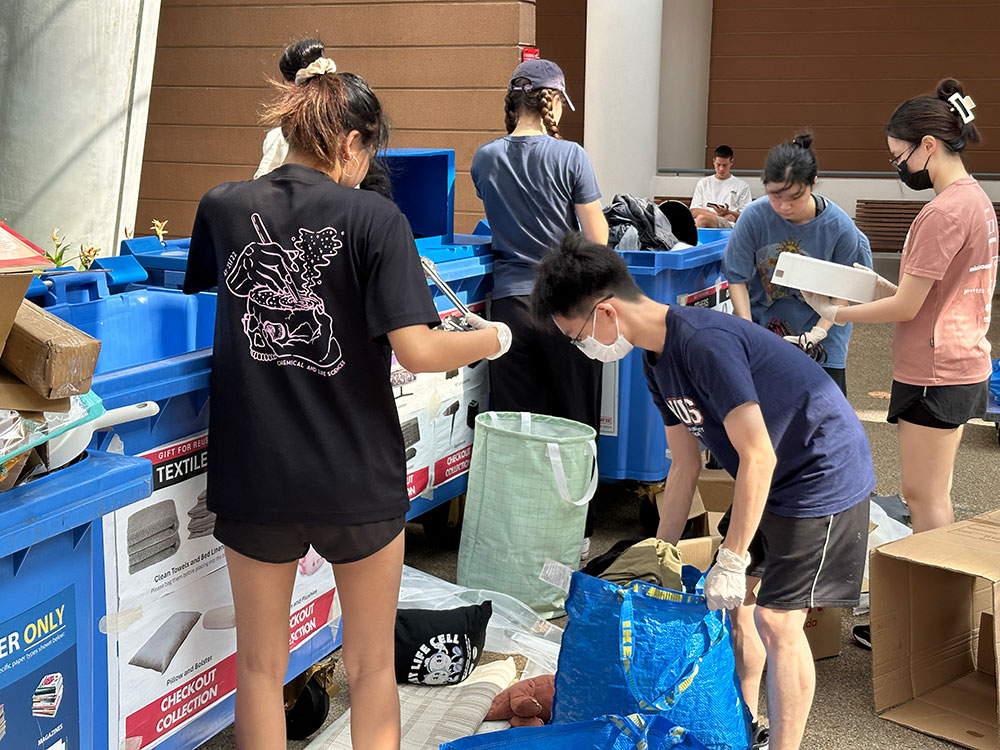

An artist impression of refreshed Recycle Right bins
In 2024, our recycling rate fell to 19% from 27% in 2023, while daily waste disposed per capita inc kg/day/capita in 2023 to 0.22 kg/day/capita. This was due to increased food waste from a larger campus population, more catering activities, and only preparatory food waste being transported via the new hub-and-spoke treatment. We have also closed the plastic PET-1 waste loop, where plastic bottles on campus ar recycled PET-1 resins for new bottles.
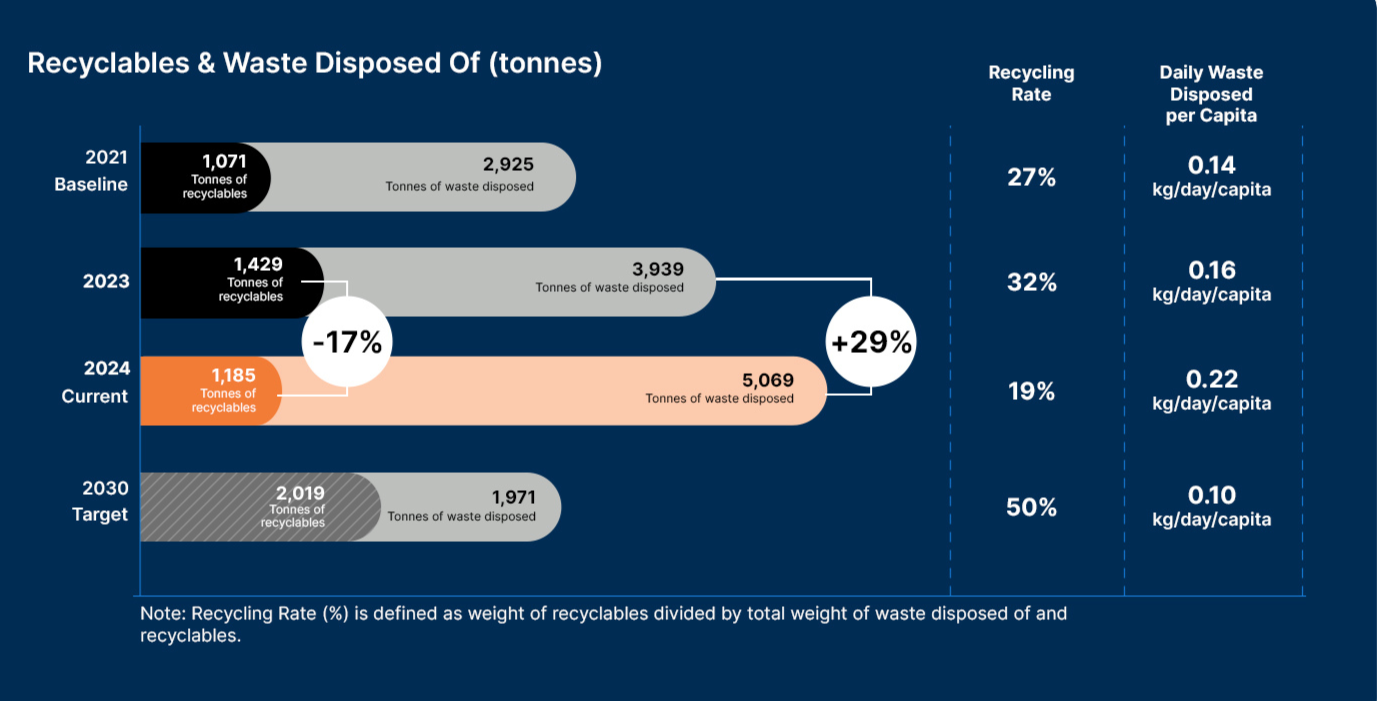
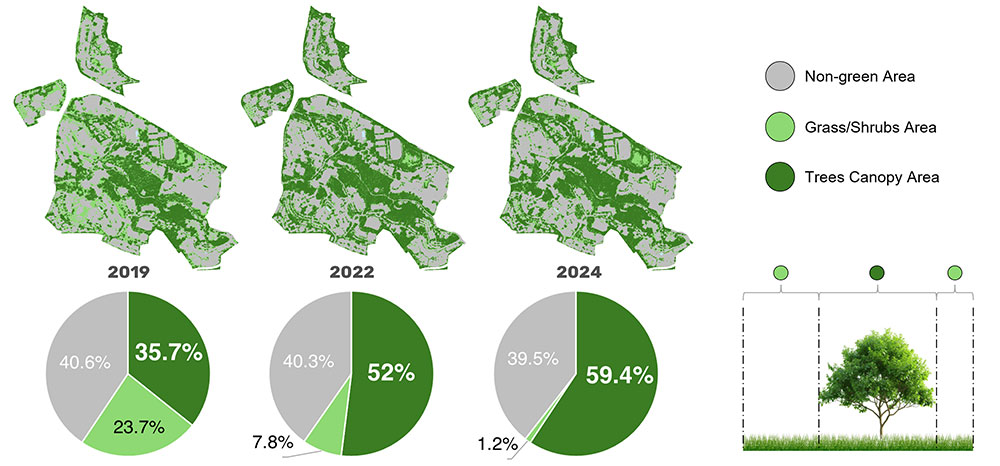
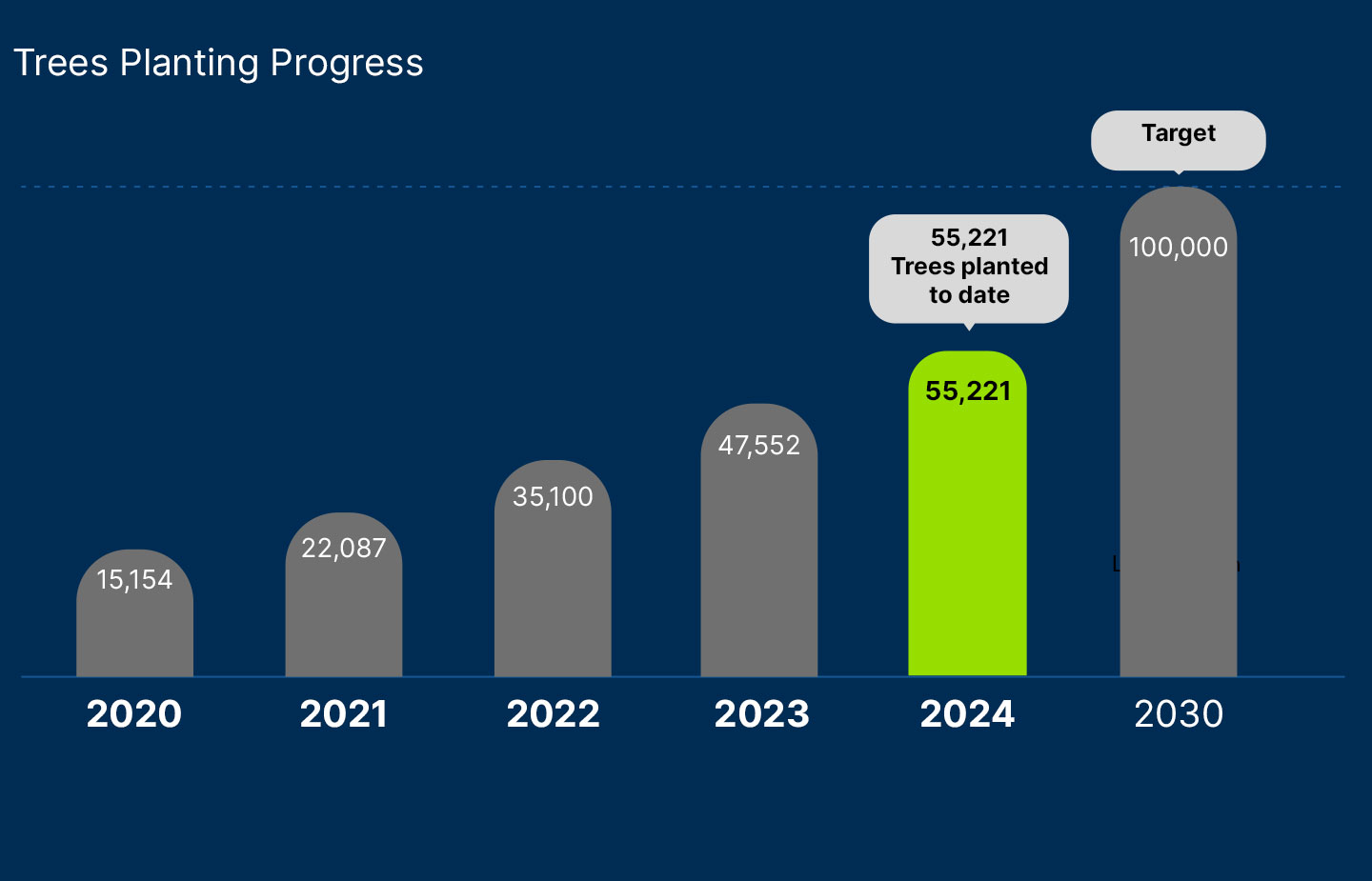
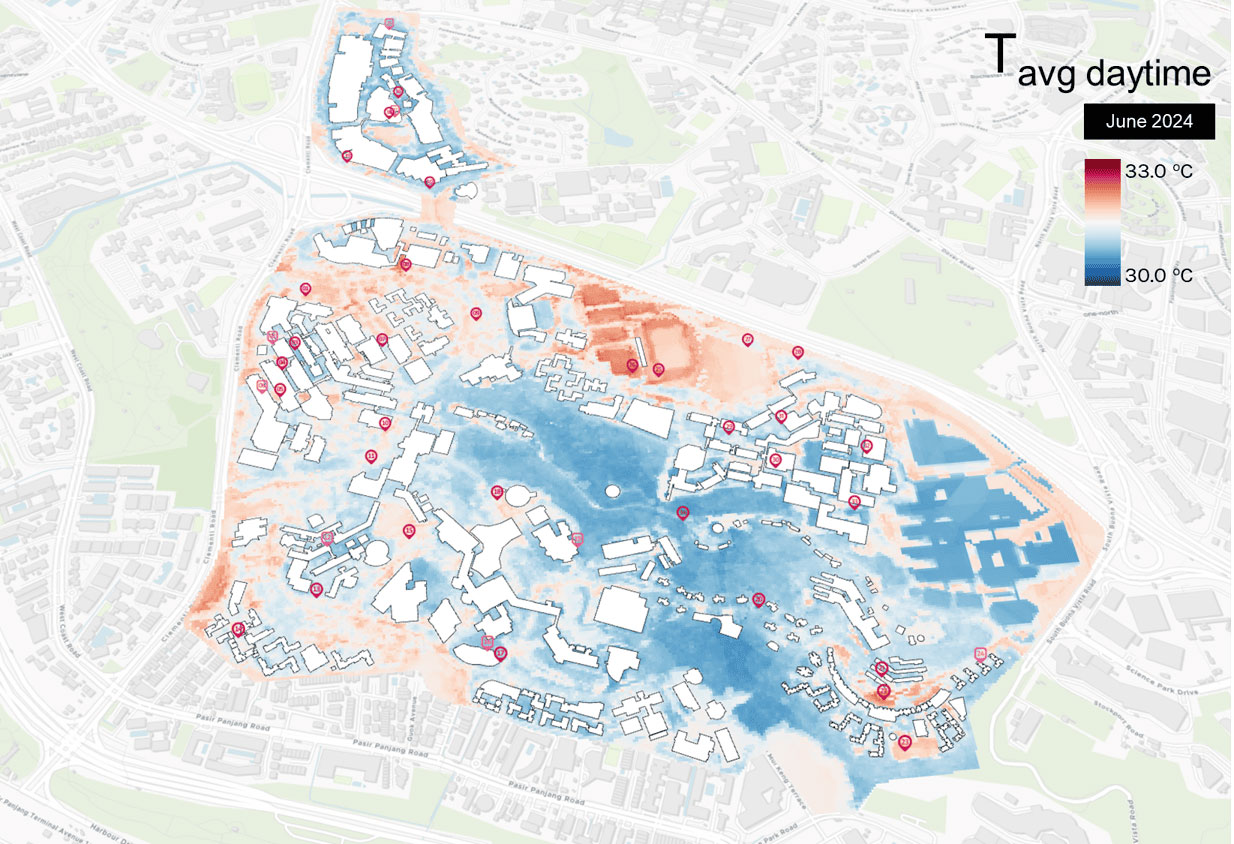
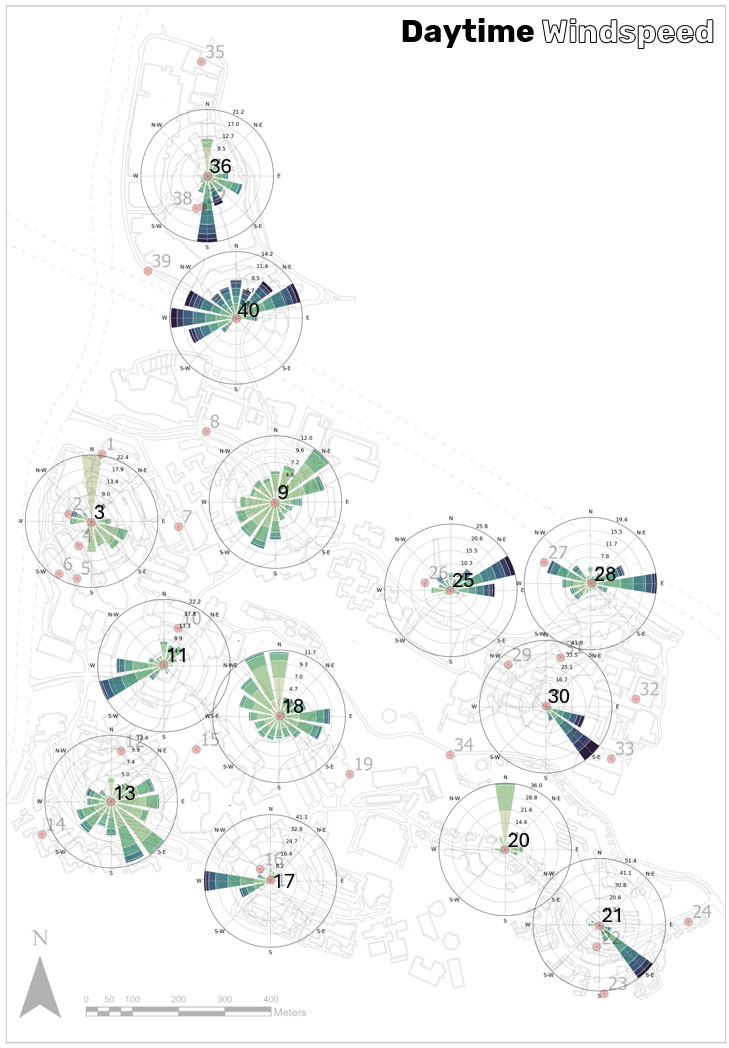
Our dense sensor network collects microclimate data that measures two key parameters of outdoor thermal comfort – temperature (1st photo), and wind speed and direction (2nd photo).
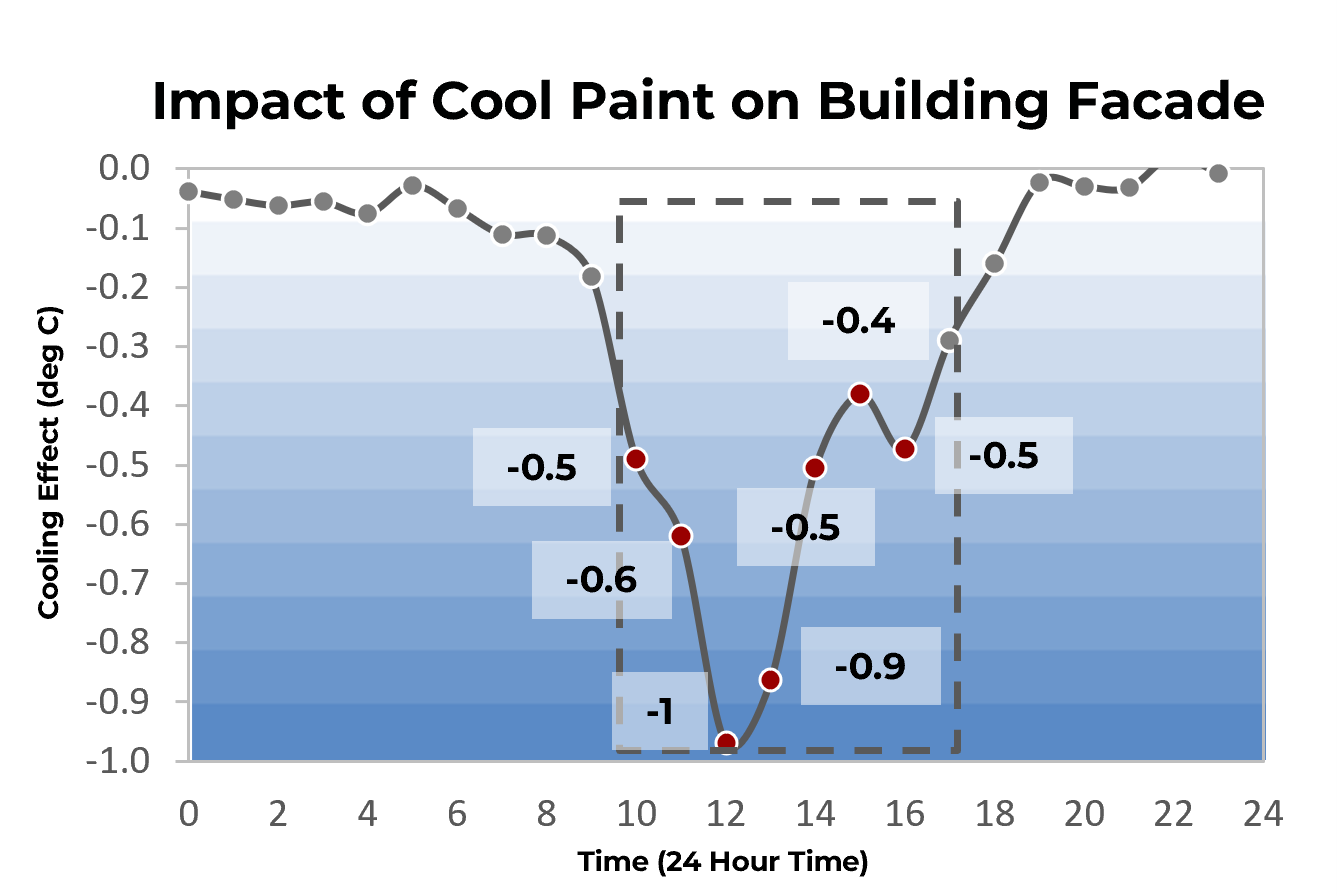
Cool paint of higher solar reflectance was applied to the west-facing façade of E1A, increasing reflected solar radiation from 31% to 62%. Statistical analysis showed that it was effective in lowering ambient temperatures by 0.4 – 1.0 deg C, between 10am to 5pm.

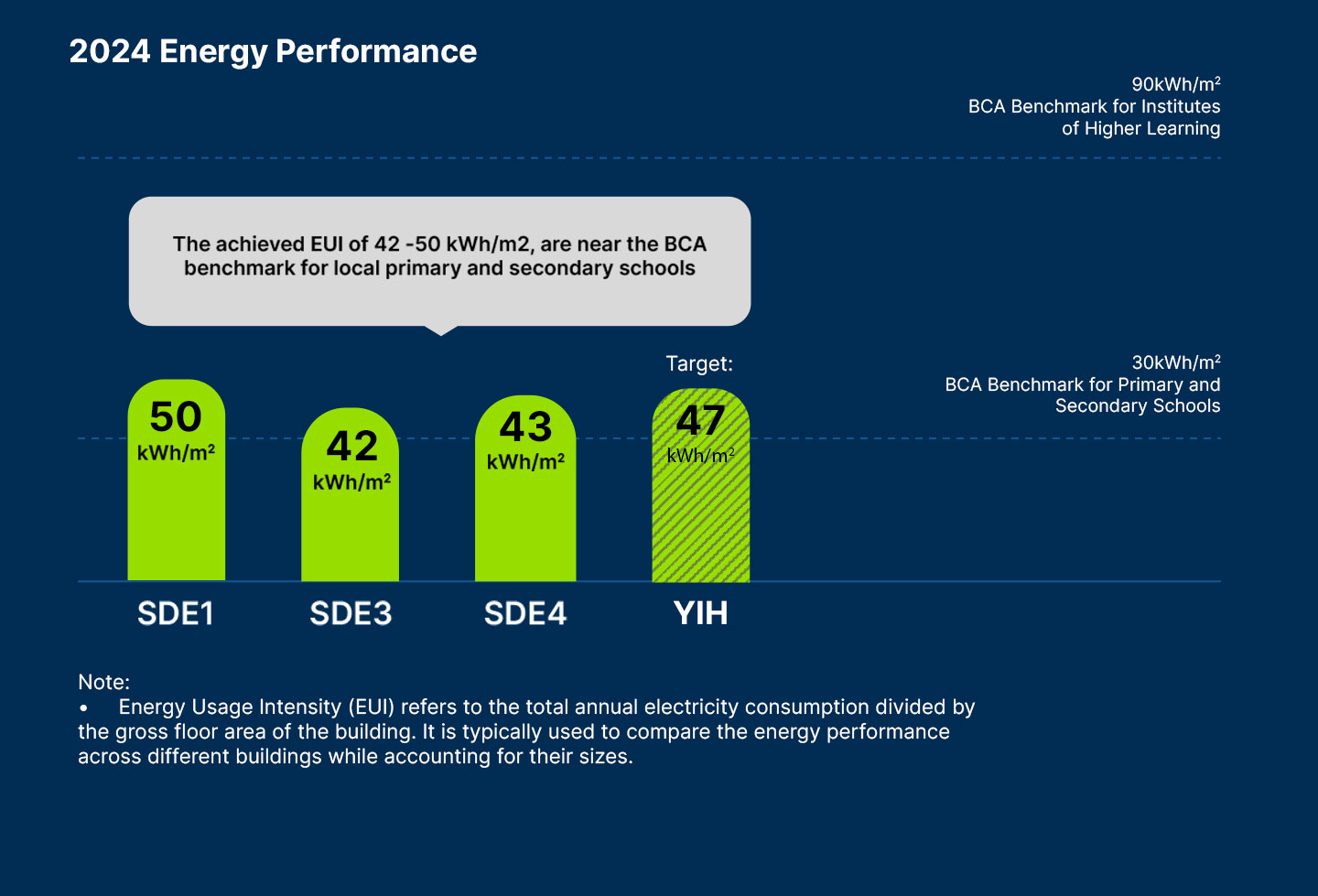
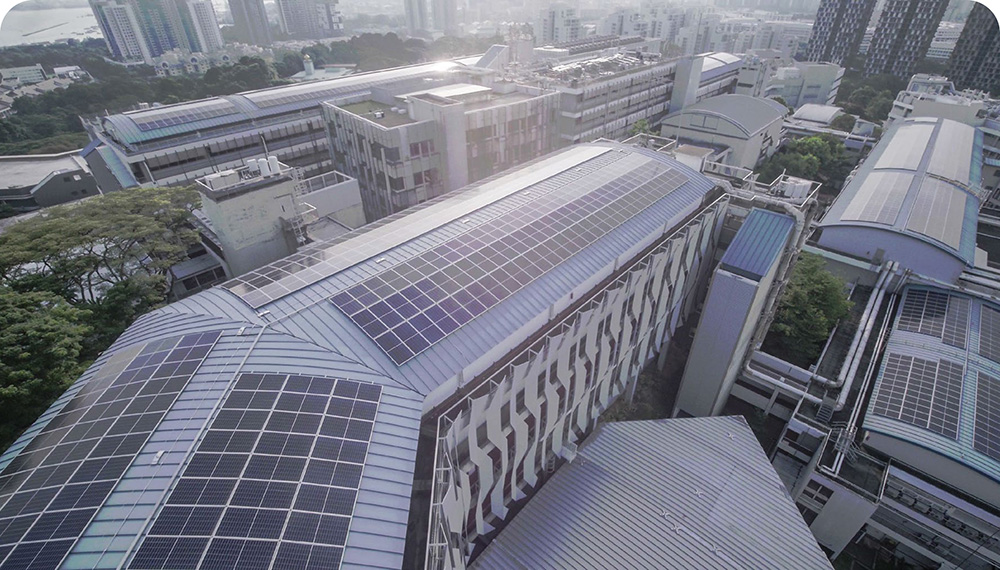
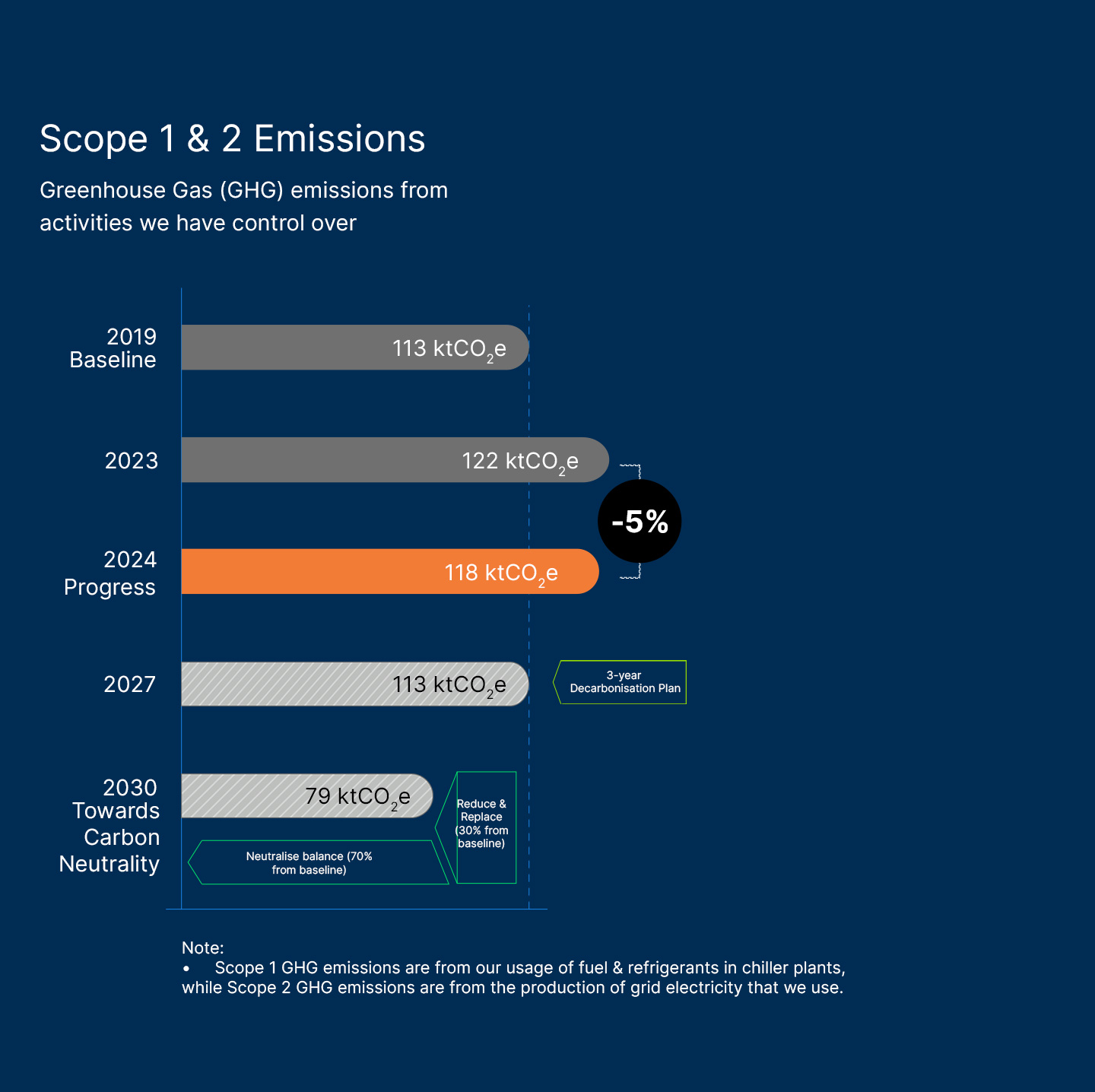
‘Zero waste’ is not an end outcome where literally no waste is generated or disposed. In Zero Waste precincts, we strive to minimise waste sent for incineration by applying a waste hierarchy to reduce consumption, encourage reuse, repurpose for a second life with an objective to close waste loops, and recycle key waste streams responsibly.
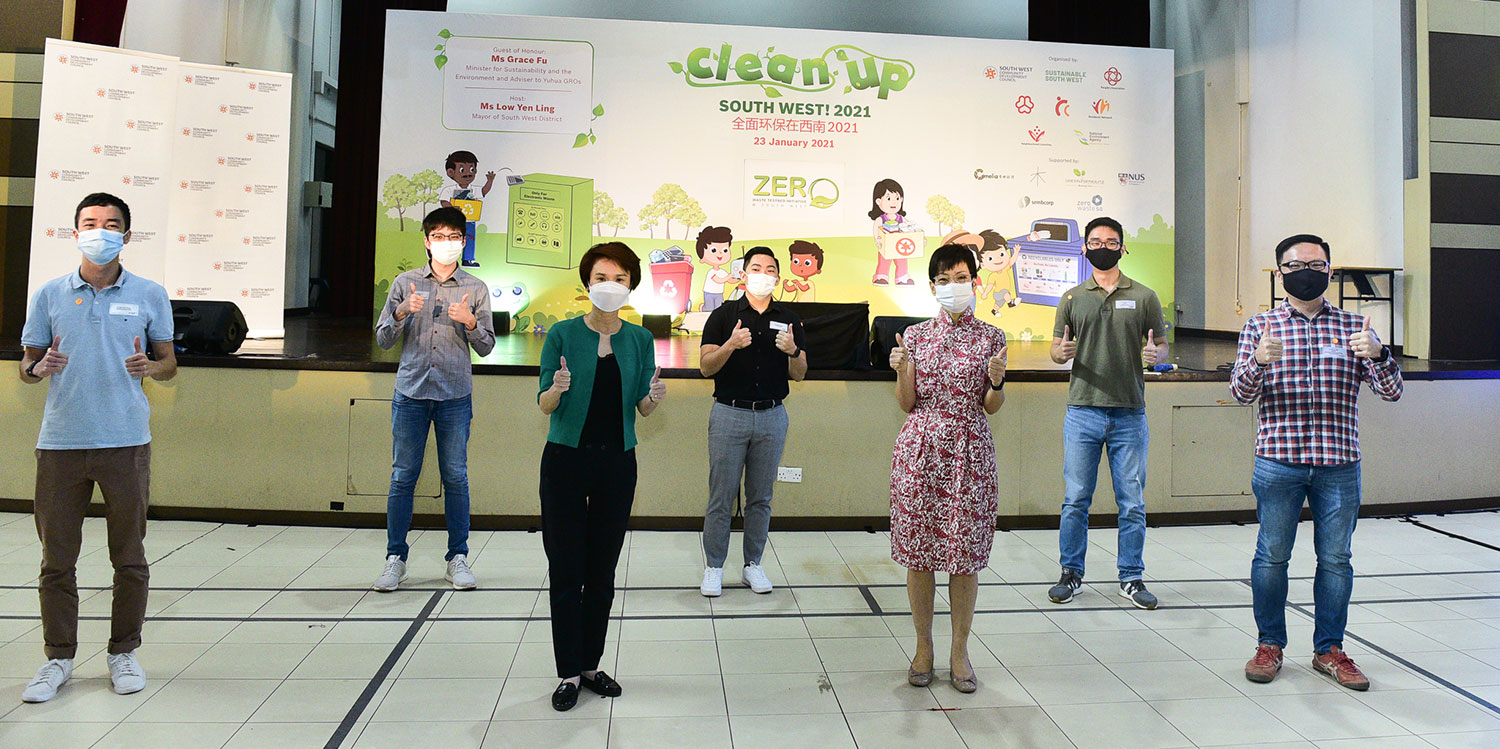
“This is a wonderful way to make our university a living lab for new technology and bringing it down to actual practices.”
- Ms. Grace Fu, Minister for Sustainability and the Environment at the launch of the Zero Waste Testbed Initiative in 2021
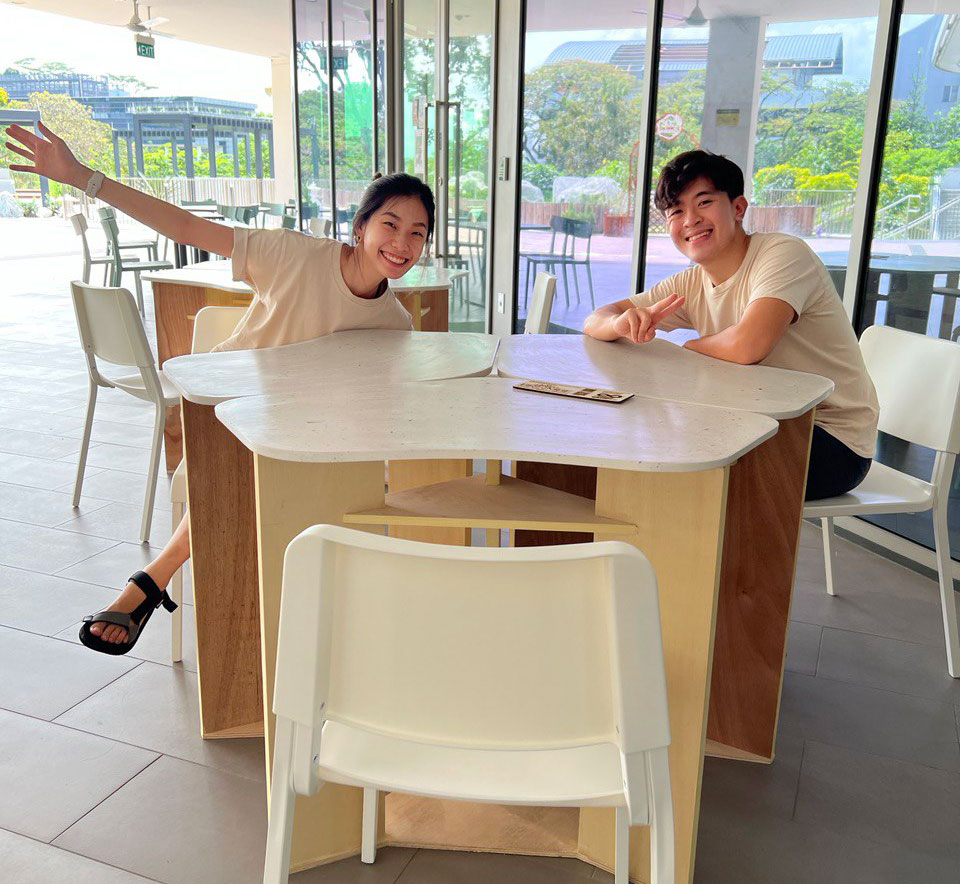
Brambe, comprising NUS architecture alumni Bernie Ang and NUS environmental studies alumni Amanda Tay, used plastic waste with jesmonite to build street furniture. They have grown this into a business, providing design customisation of products like trophies. With further R&D, Brambe has also expanded to upcycle glass waste in a 60-70% waste-to-aggregate ratio.
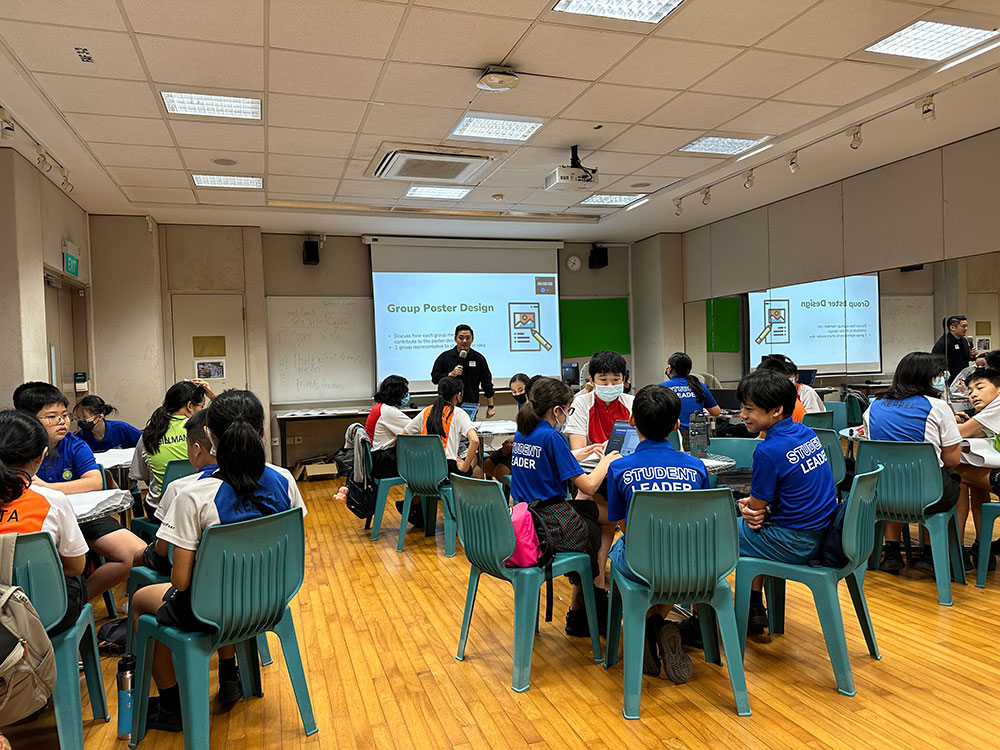
NUS industrial design alumni Tommy Cheong, in collaboration with Blangah Rise Primary School, led the curation of a Sustainability Resource Pack that aims to guide young learners to understand sustainability issues first, and then ideate new solutions.
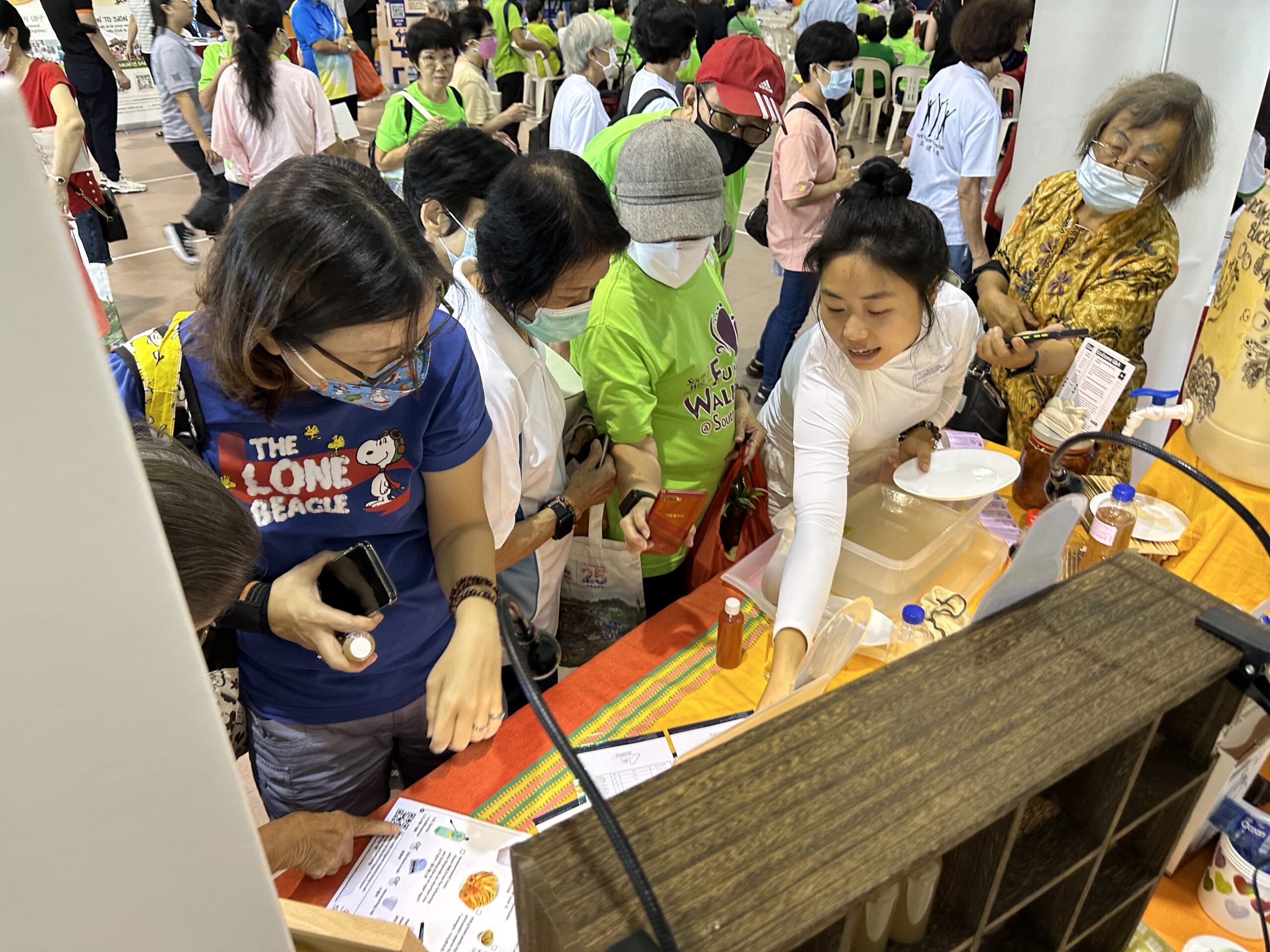
Image source: Mustsharenews.com
NUS industrial design alumni Ana Zeng incorporated discarded fruit peels into detergent or “Eco Enzyme”. She has since founded a non-profit social enterprise, EcoEnzyme Learning Studio, to teach people how to create such detergents at home and build a supportive learning community around it.

We are striving to maximise our solar capacity to 14 MWp by 2030 through higher efficiency solar panel technology and increased roof top coverage.
While new buildings have achieved Green Mark (GM) Platinum and above certifications in design, we are also optimising the energy consumption in these buildings during operations. By 2025, we strive to beat the increase and achieve 118 ktCO2e as an interim target, aiming for 7.5 ktCO2e reduction through green lab initiative and commissioning campus-wide rooftop solar panels.





-Mrs Enda Chan,
Subject Head, Environmental Education.
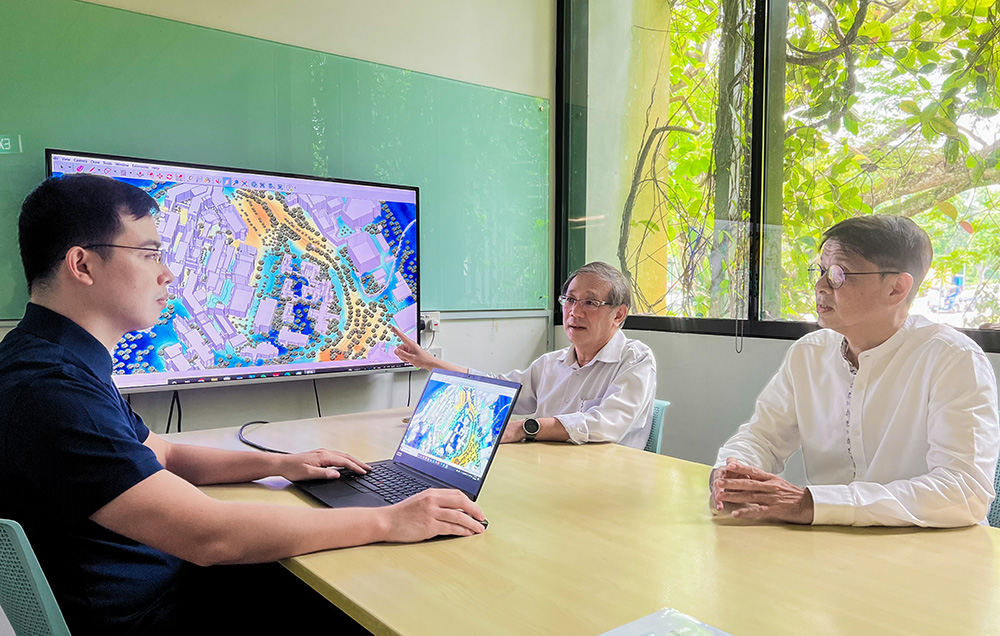
Professor Wong Nyuk Hien (middle), an Urban Heat Island expert, is leading the Cool NUS-BEAM Initiative consisting of researchers from College of Design and Engineering and staff from University Campus Infrastructure.
STEVE (Screening Tool for Estate Environment Evaluation) – predicts air temperature within a 50-metre radius around a particular point, using urban morphology predictors such as green plot ratio and sky view factor.
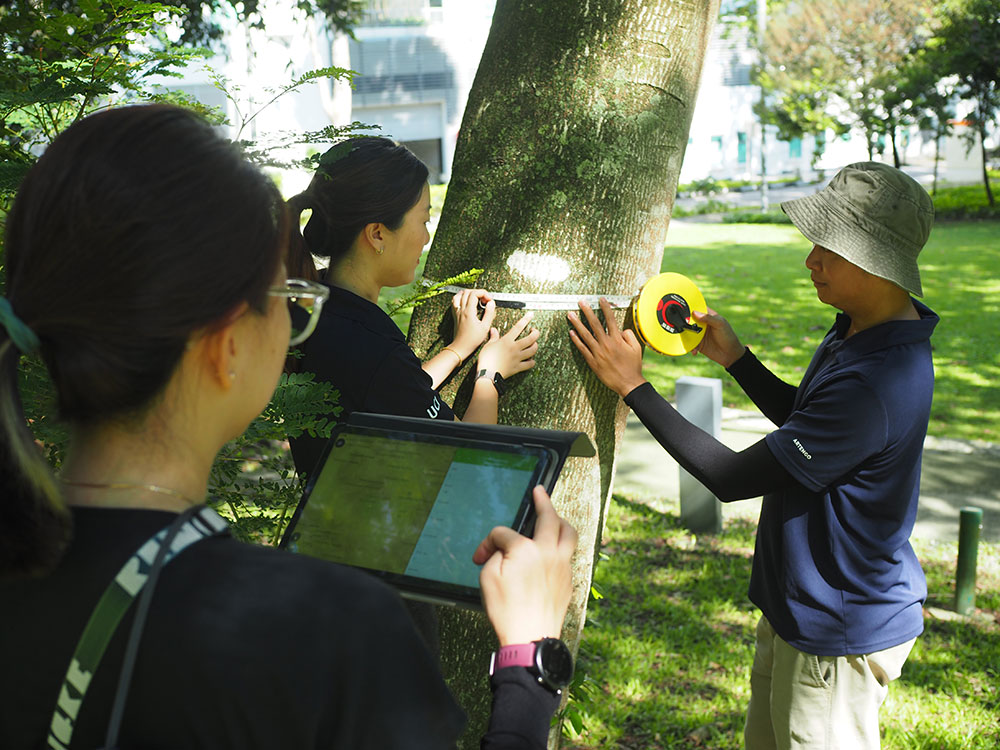
We are using a digital greenery model that integrates data from satellite images, a 3D scan of the campus and on-ground physical measurements of large trees on campus. This model will analyse how the microclimate and outdoor thermal comfort have changed since the start of our tree planting efforts. At a granular level, we will study how the different plant species and planting approaches influence outdoor thermal comfort to guide our planting efforts.
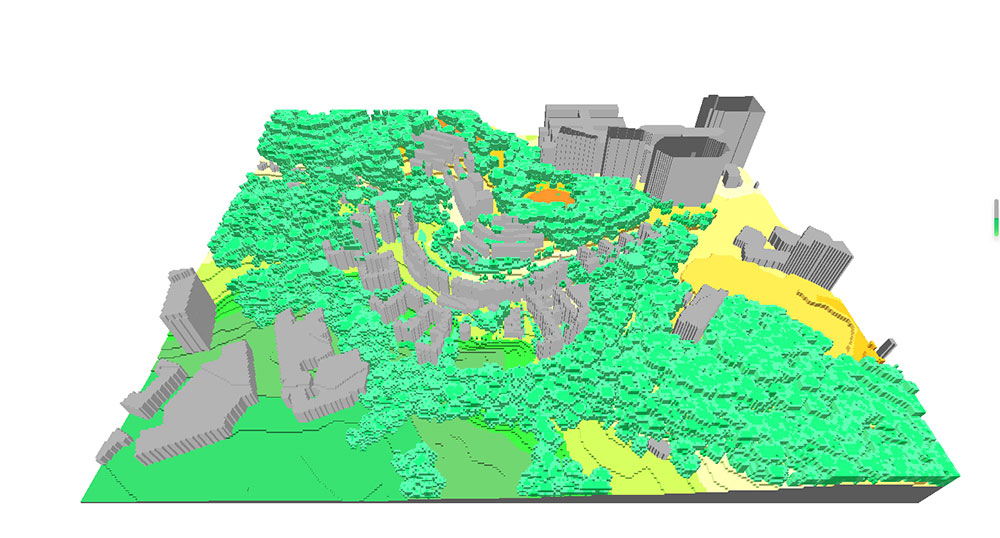
The digital greenery model of Prince George’s Park Residence was created using satellite images, a 3D campus scan, and on-ground physical measurements of large trees.
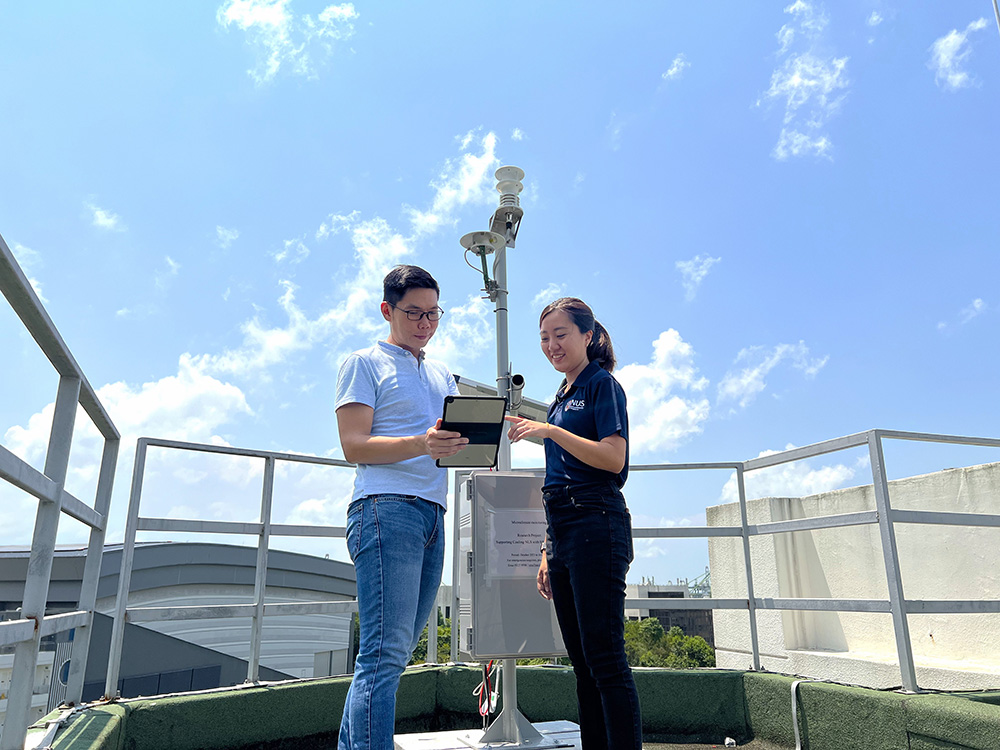
University Campus Infrastructure and College of Design and Engineering have installed the densest microclimate sensor network on local campus, with 49 high-resolution sensors to measure microclimatic conditions across various urban environments and heights on campus.
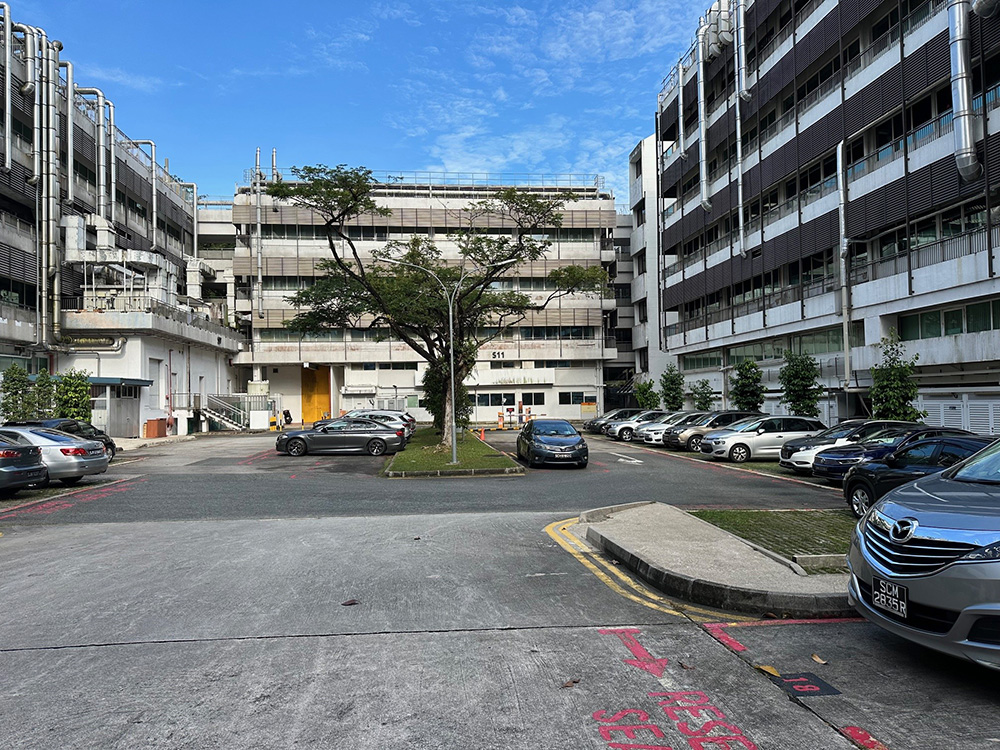
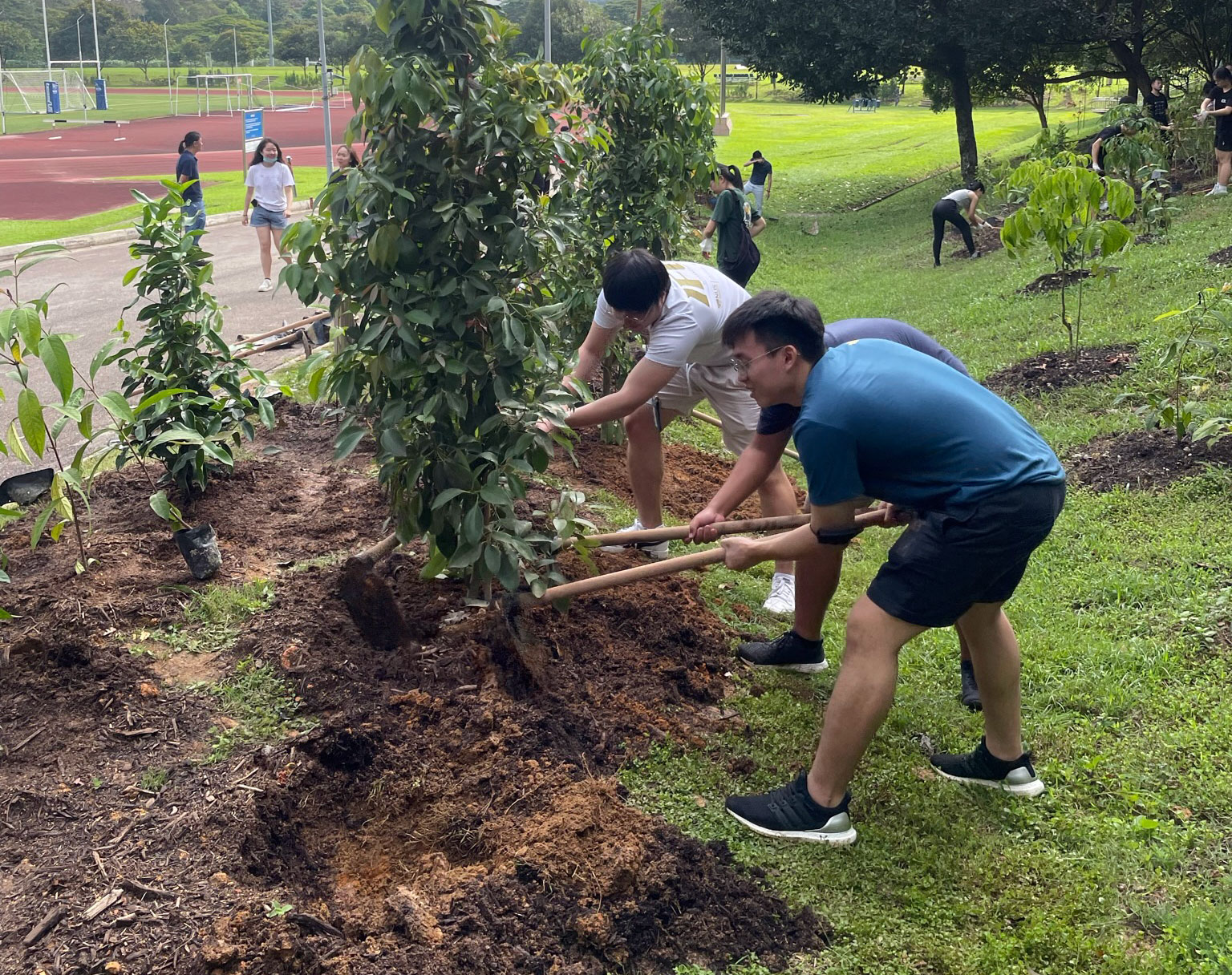
NUS students planting trees along the University Sports Centre in 2022.
Since 2011, we have been extending green spaces on campus by growing more naturalised gardens and nature ways and reforesting the Ridge, a young secondary rainforest located at the heart of Kent Ridge Campus. Contributing to Singapore’s OneMillionTrees movement, we pledge to plant 100,000 new trees on campus by 2030. Find out more about NUS Trees.
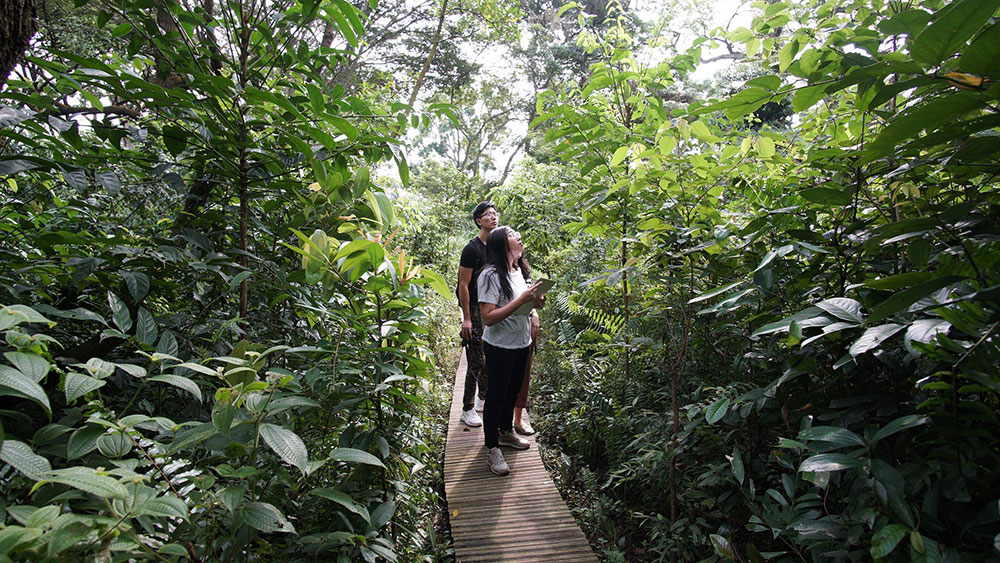
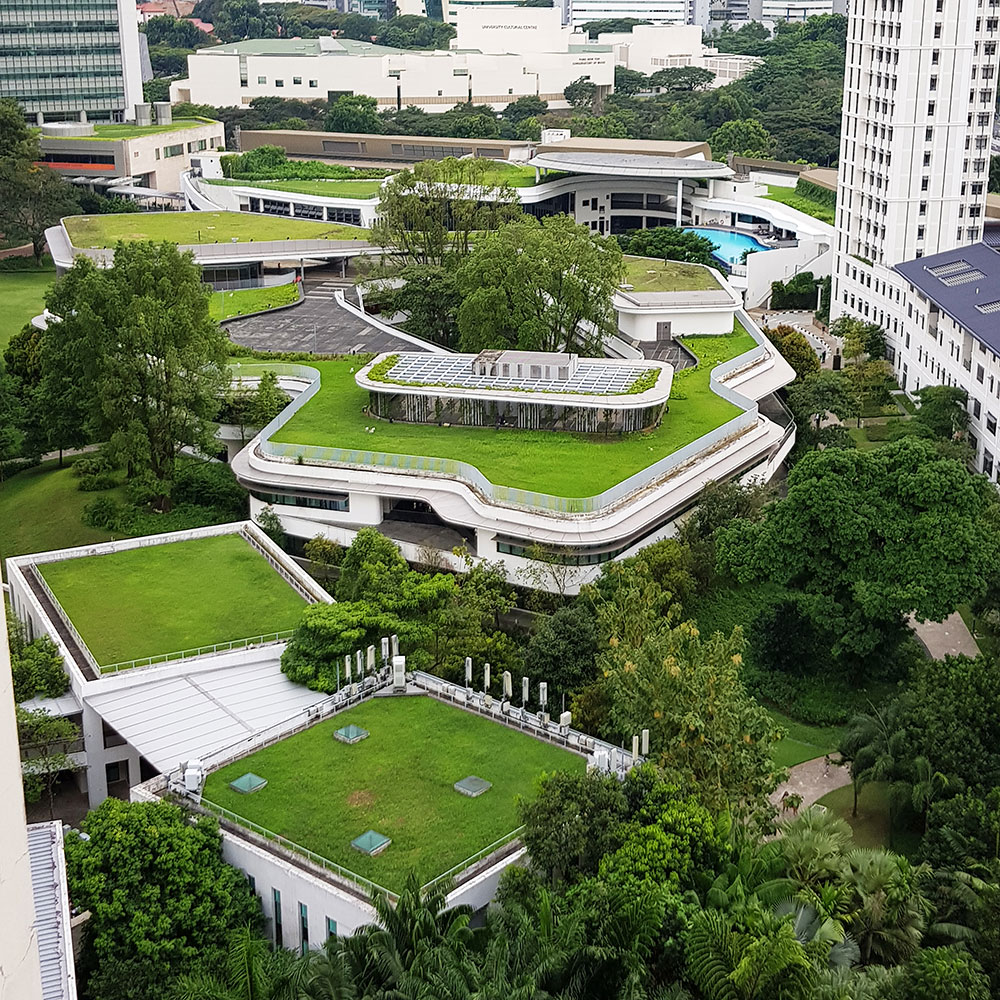
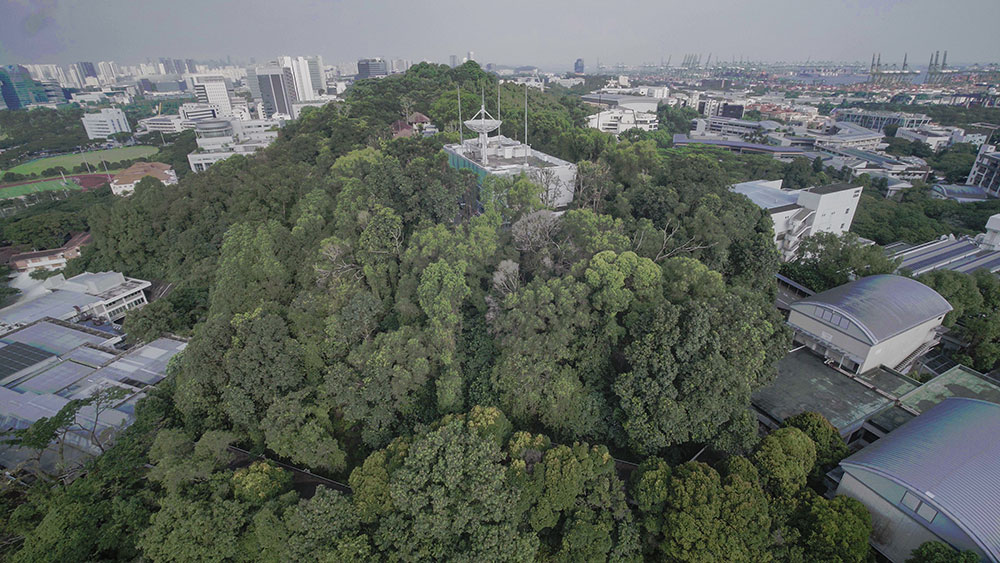
Improving accuracy in waste weight data collection using an optical character recognition technology developed by NUS Students Mr Jax Lee, Mr Filbert Chan, Ms Rachel See from Faculty of Science.
To improve accuracy in data capture, NUS students from Faculty of Science developed a prototype using optical character recognition technology that automatically reads and stores waste weight data from a photo taken from the truck’s dashboard screen. To identify opportunities to divert waste from incineration, we also conduct waste composition studies.
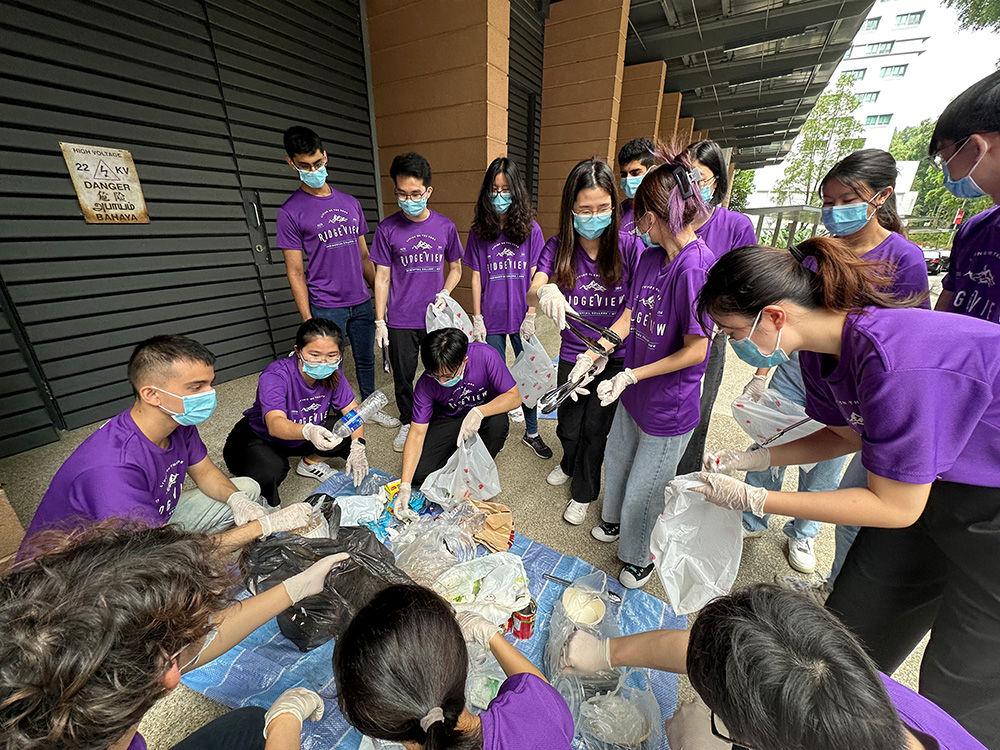
Waste composition studies conducted by students from Ridge View Residential College as part of their sustainability course.

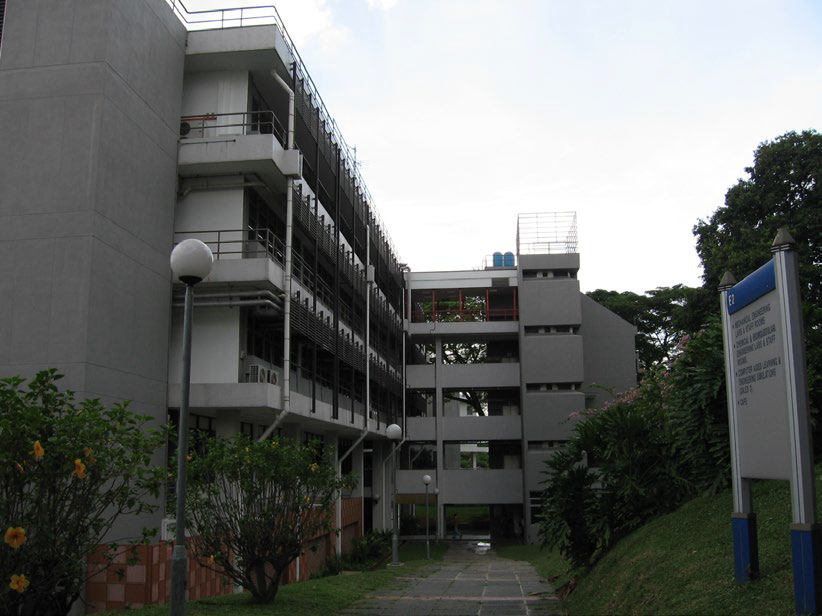
NUS is the first local campus to install a network of high-resolution sensors across the campus to measure microclimatic conditions across various urban environments and heights. The microclimate data (for example temperature, wind speed and direction, solar radiation, humidity) allows us to establish the campus baseline outdoor thermal comfort conditions, identify hotspots and assess effectiveness of mitigation measures in improving outdoor thermal comfort.
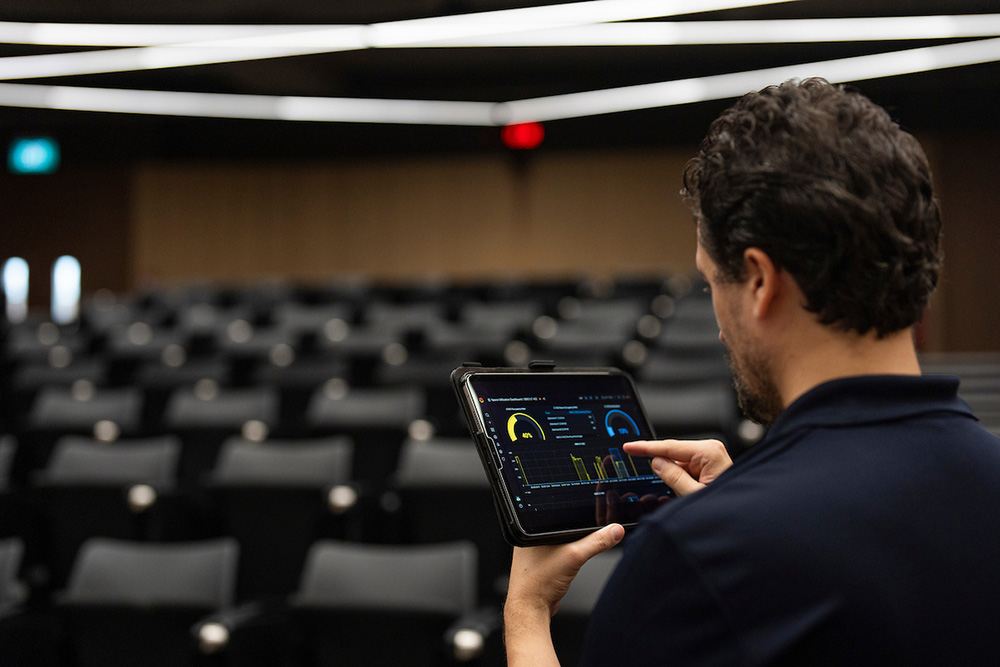
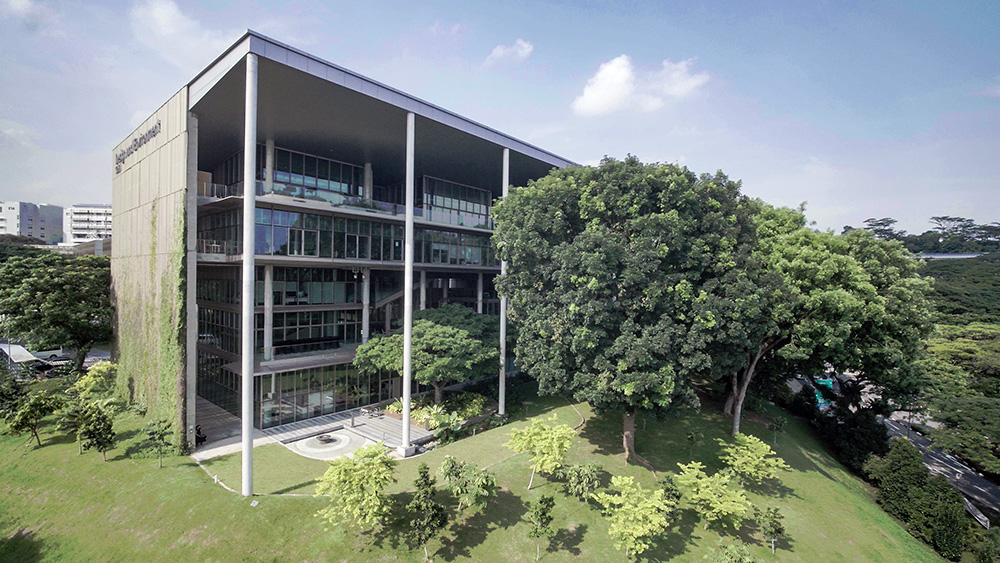

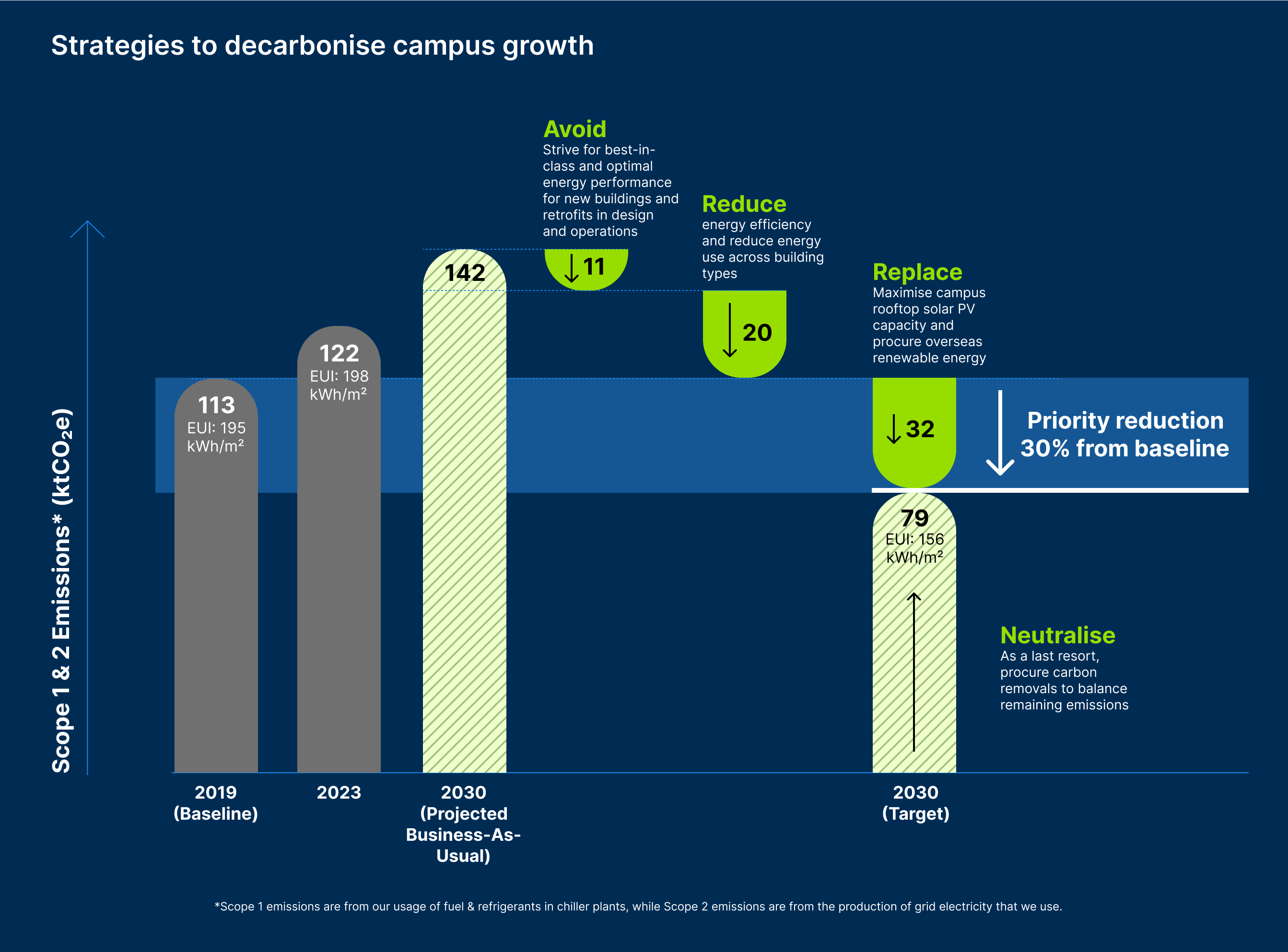
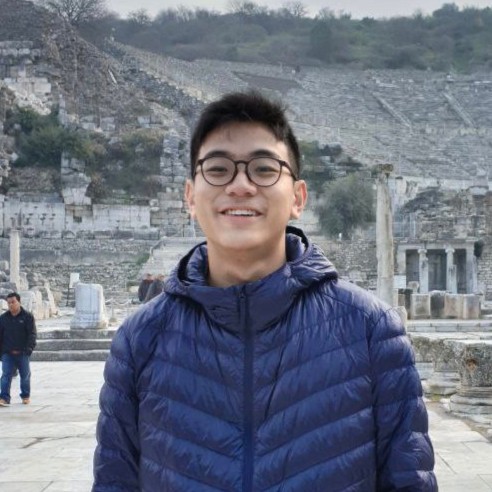
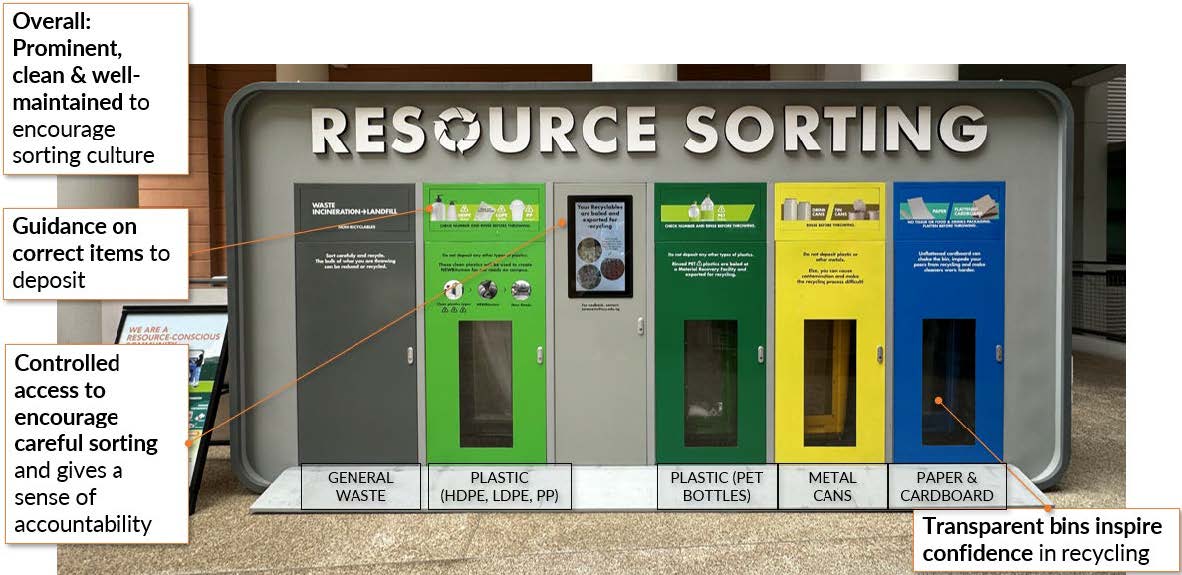
The pilot RSS were introduced at Tembusu Residential College and UTown Residence in 2023, supported by the SG Eco Fund. Designed to replace the back of-house chute system with centralised ground level sorting, the RSS encourages positive social norms of waste sorting with pilot implementation showing recycling contamination rate dropped from 50% to <5%. The pilot RSS is being refined as a blueprint for future waste sorting experience in high rise student hostels.
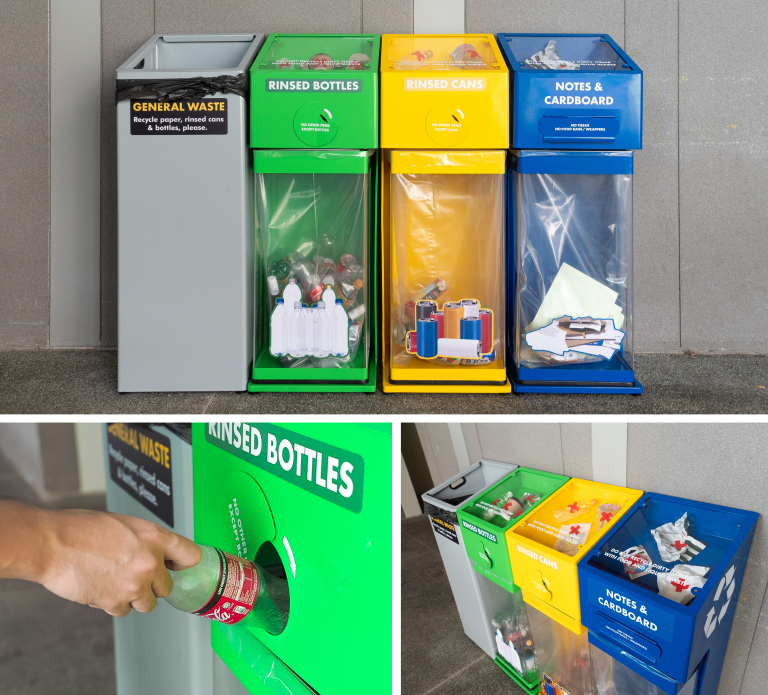
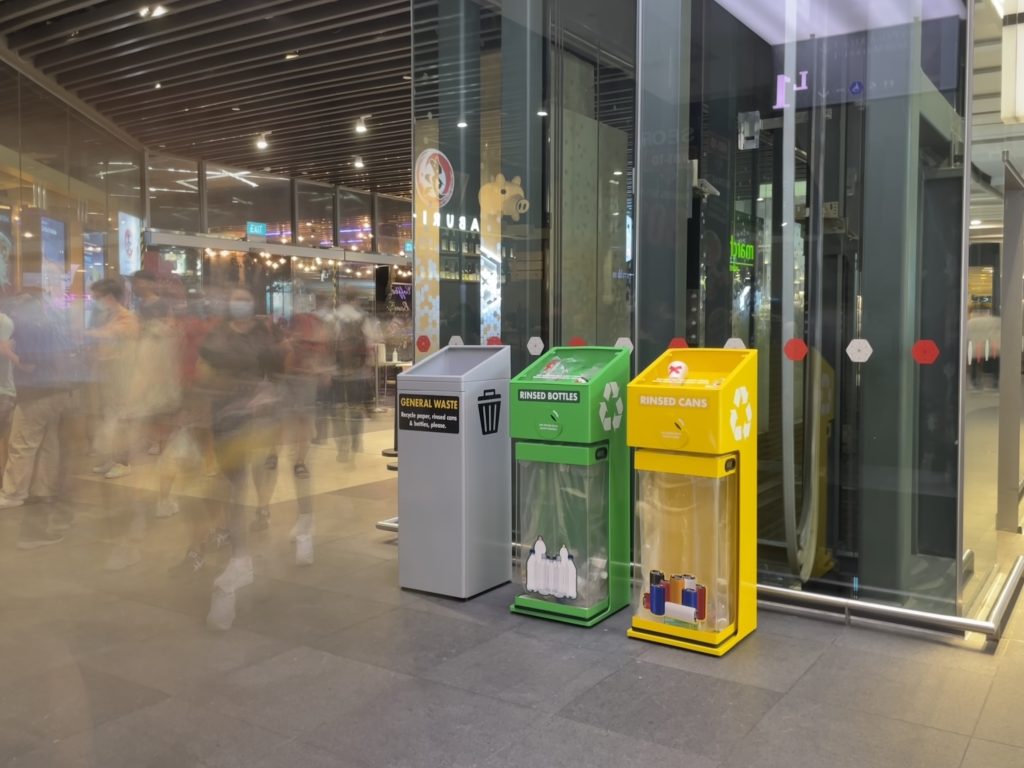

-Mrs Enda Chan,
Subject Head, Environmental Education.
Student-initiated reminders placed at food court stall fronts to minimise food waste. Read more here.
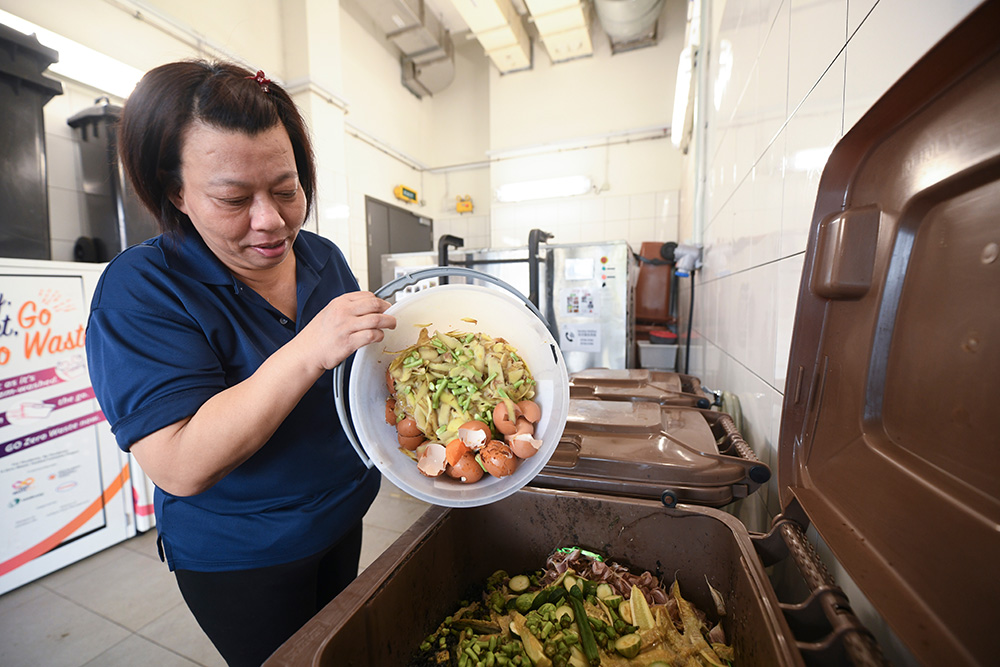

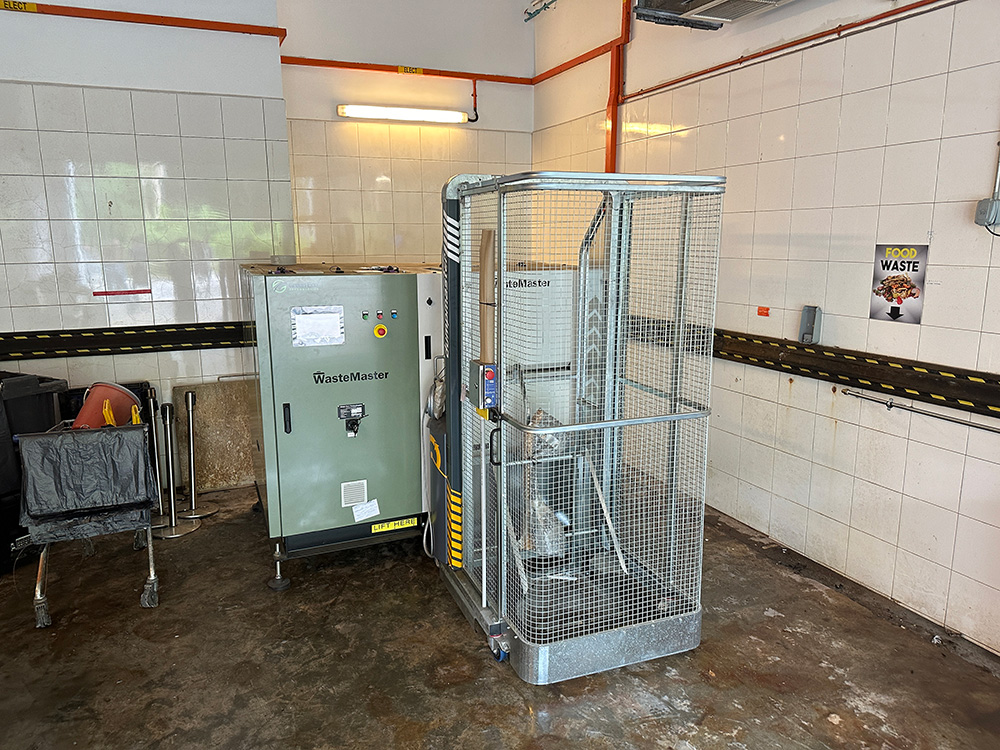

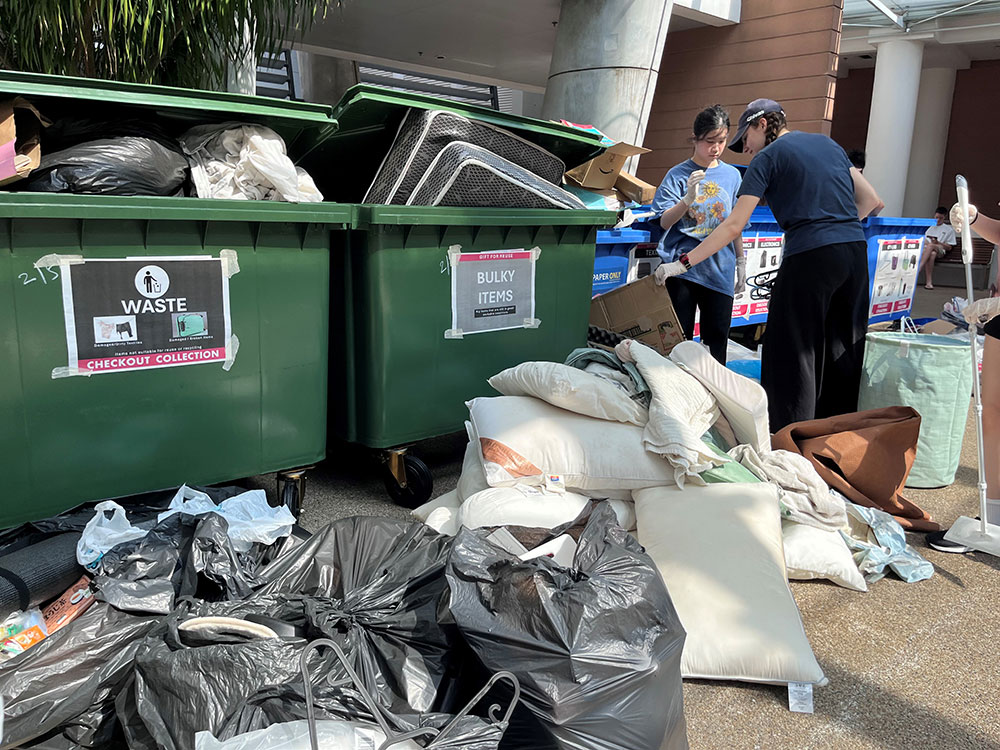
A large amount of waste is generated during biannual hostel checkout at the end of each semester. To prevent indiscriminate dumping in the chutes, ground level collection points are set up for hostelites to sort waste, recyclables and reusables before moving out.
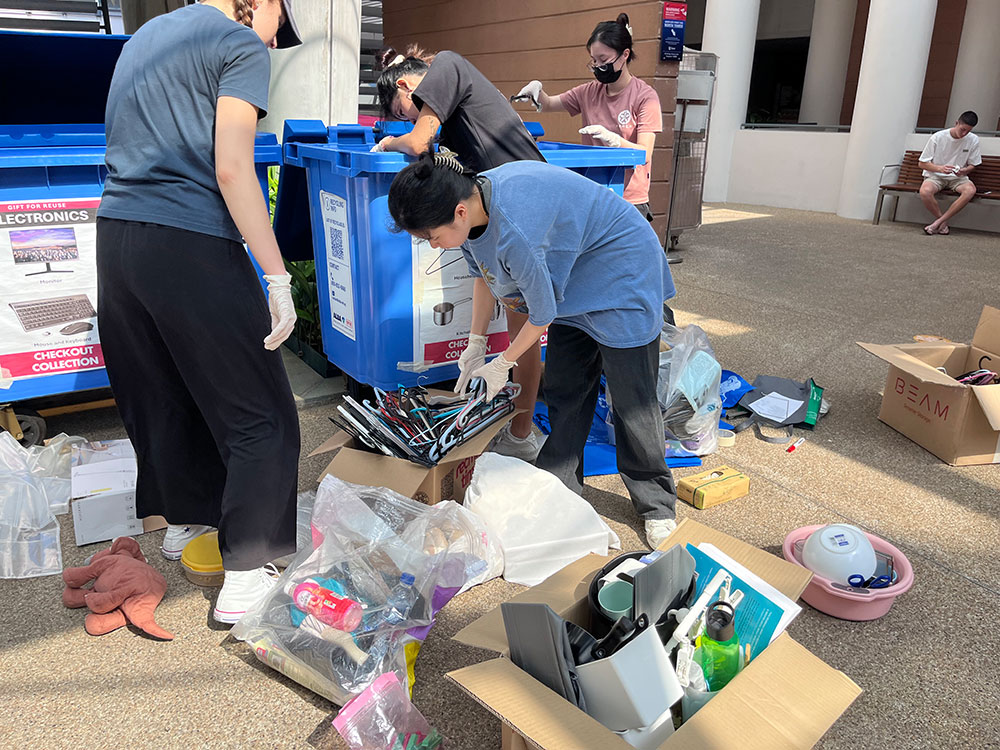
Reusable items in good condition are sorted by students. Textile items like pillows and bedsheets are sent to Cloop, while clothes hangers are set aside for reuse by incoming hostelites.
To ensure that our recyclables will be processed, we collect only materials with downstream demand.
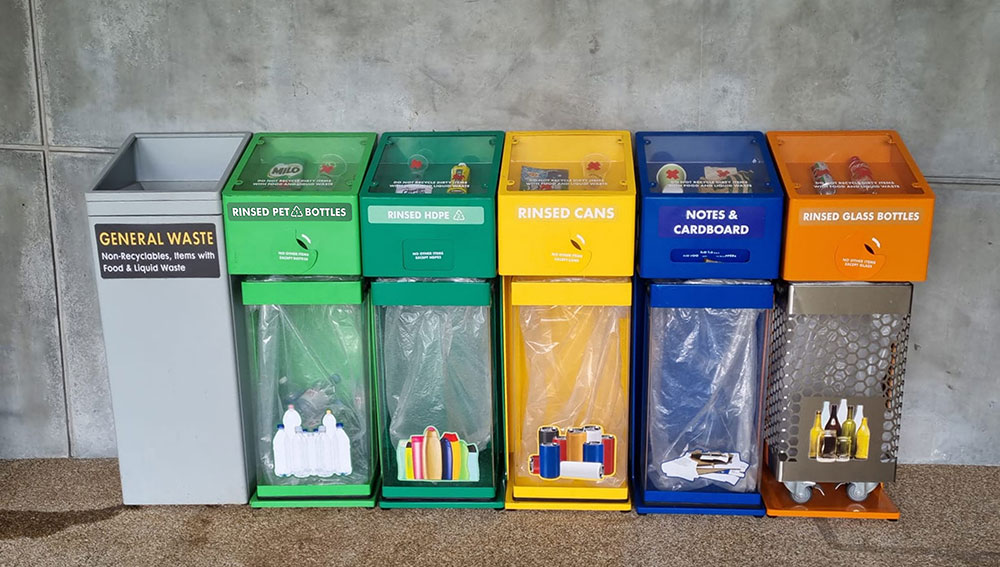
Unlike the public commingled (mixed) recycling collection, we practise segregated recycling on campus where our community sorts at source to minimise contamination. Clean Plastic PET♳ bottles collected here are sent for processing to be converted into food grade rPET♳ resins to close the plastic waste loop.
E-waste on campus is collected by ALBA through dedicated bins placed on campus or directly through ALBA STEP UP app. Collected e-waste is then distributed to local facilities like EWR2 which takes apart components, sort materials and harvest precious metals.
A work bench for dismantling electronic equipment at EWR2 in Tuas Singapore. Source reference from Mothership.
Textile, including clothes, pillows, bedsheets, are collected through Cloop bins on campus and annual campus-wide reuse drives. Collected textiles are distributed to ISO-accredited recycling partners like LifeLine Clothing Malaysia Sdn Bhd, to be sorted for reuse, upcycling or recycling internationally.
LifeLine Clothing factory floor in Port Klang, Malaysia, where fabrics are sorted into more than 500 categories before being baled and exported. Source reference from CNA.
Horticulture waste on campus is generated through regular landscaping and tree pruning activities. Majority is sent to a waste-to-energy biomass plant, while a small portion is converted to mulch for use on campus grounds.
800 Super’s integrated facility in Tuas South includes a waste-to-energy biomass plant which processes our horticulture waste, where the electricity generated powers another plant in the facility. Source reference from Straits Times.
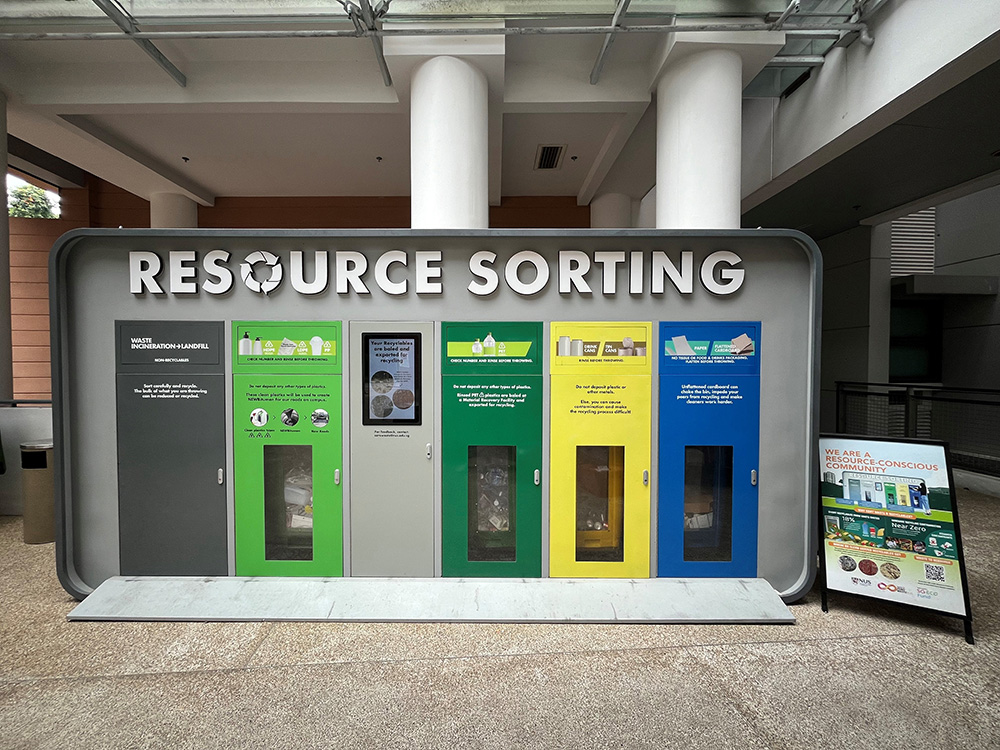
Besides PET♳, additional plastic streams (HDPE♴, LDPE♶ and PP♷) are collected through the pilot Resource Sorting Stations placed outside hostels.
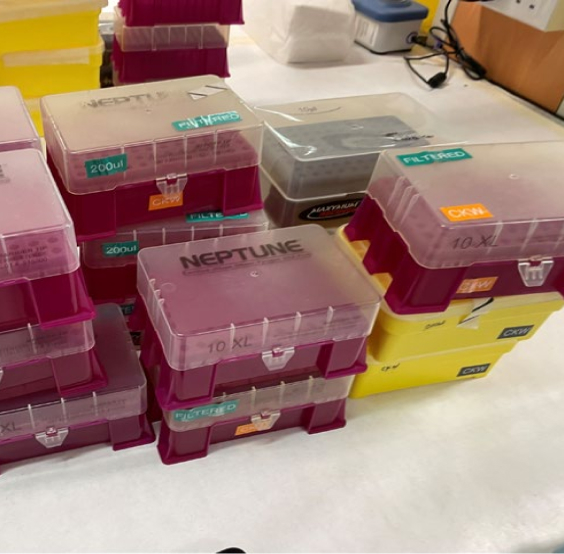
Plastic lab consumables, such as pipettes containers (PP♷) pictured above, will be collected through dedicated bin points in laboratories.
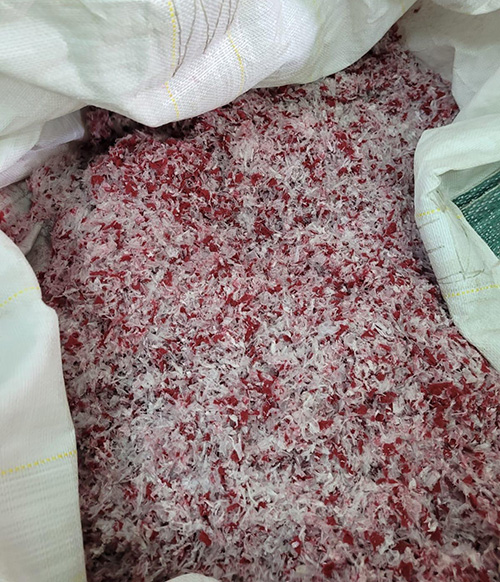
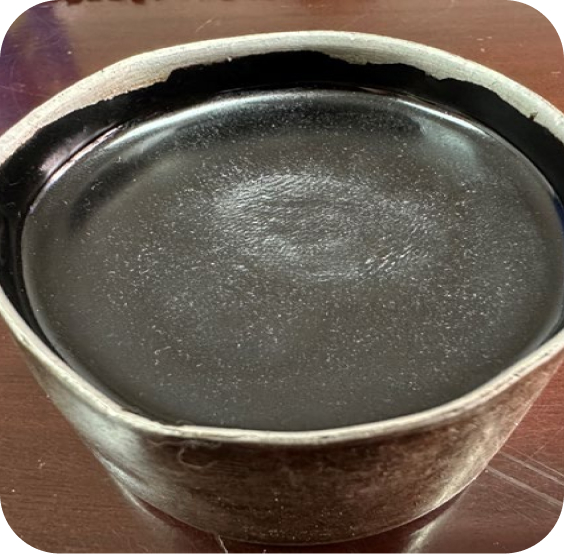
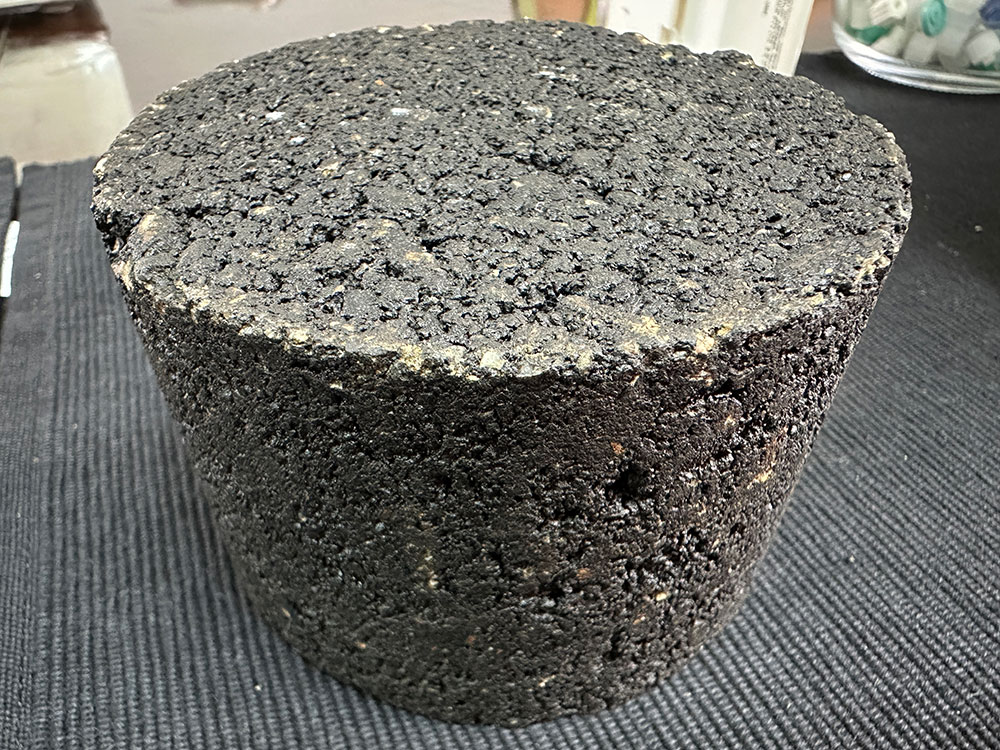
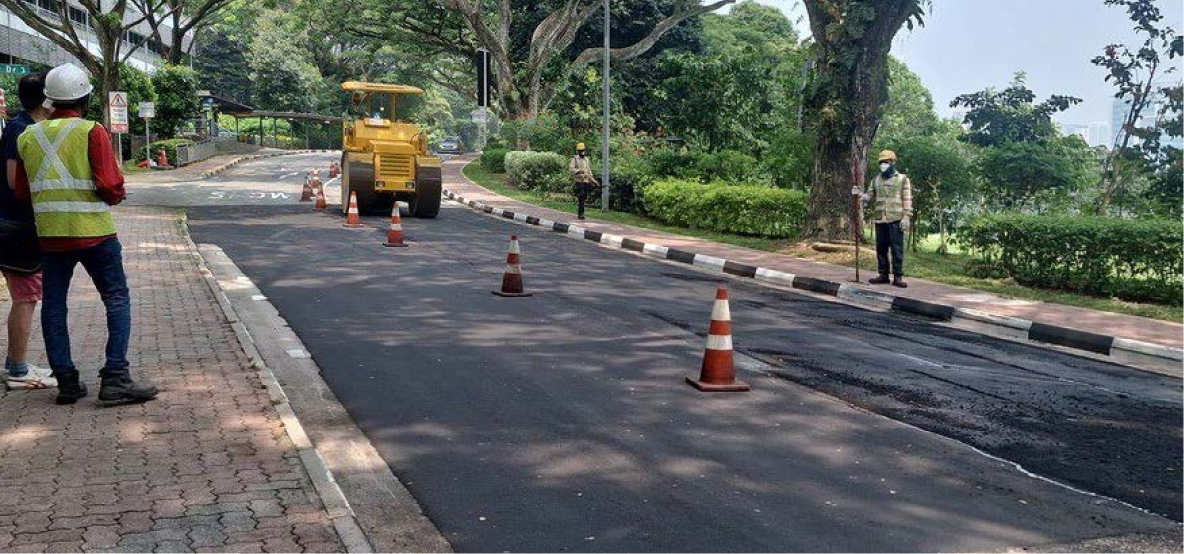
Using campus grounds as a testbed, we are collaborating with industry and academic partners to use them in producing bitumen for road paving while ensuring structural integrity, safety and environmental performance.
In facilities outside the campus, plastic materials are shredded before processing to form a bituminous mix for road works.
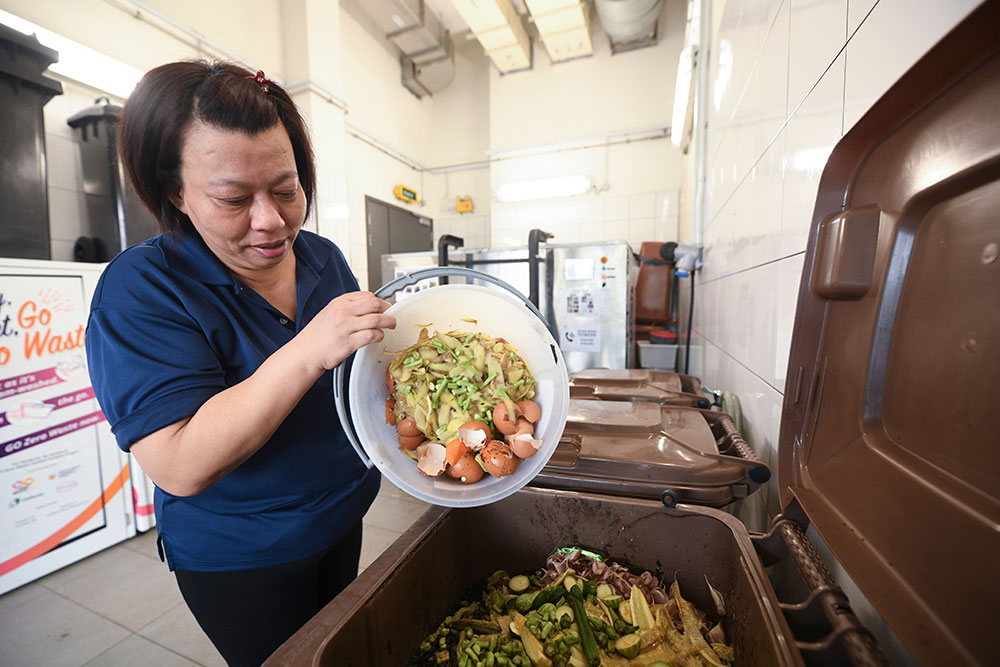
Kitchen staff sort preparatory food waste like fruit peels and vegetable scraps into dedicated food waste collection bins.
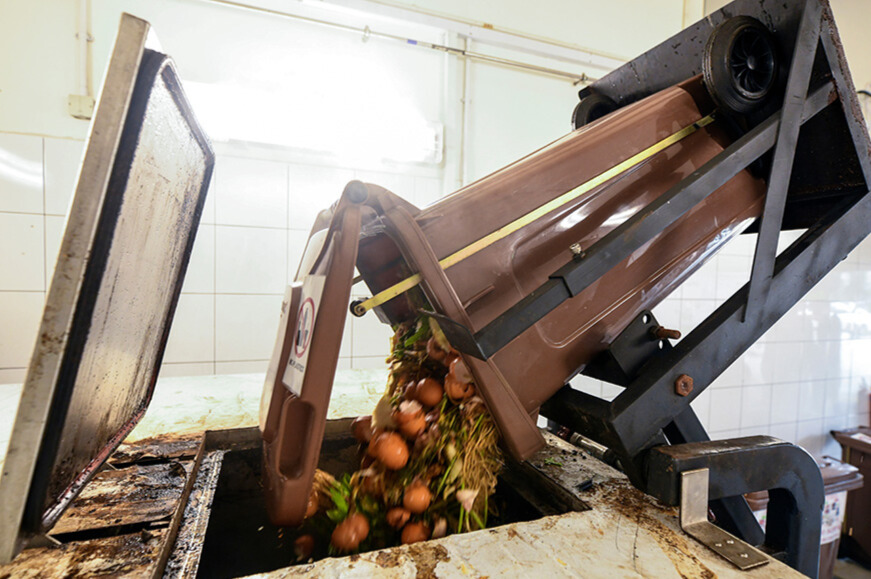
Collected food waste is sent to one of our three onsite aerobic digestors to be turned into compost for campus landscaping, or to the waste valoriser at Tembusu/Cinnamon Residential College to be processed into aquaculture feed testing.
Takeaway disposables made up about 13%1 of waste disposed of in NUS. To phase out disposables, we are trialing alternatives like reusable takeaway systems or switching to compostable ware.
We have implemented a food waste valoriser at Cinnamon & Tembusu College in University Town. Working with Life Lab Resources, we are converting our food waste into high calorific substrate for aquaculture feed.
Besides PET♳, we are also collaborating with industry and academic partners to test and implement emerging solutions for other plastic streams, namely High-density and Low-density Polyethylene (HDPE ♴ & LDPE ♶) and Polypropylene (PP ♷). We are developing plans to use them in producing bitumen for road paving while ensuring its structural integrity, safety and environmental performance.
NUS Sustainable Procurement Framework, introduced in 2023, integrates environmental, social and economic considerations into our procurement processes. Through this framework, we encourage our community to reduce unnecessary purchases, promote less material wastage in our value chain and consider total cost of ownership. We have identified procurement hot spots, such as food catering and lab consumables, to be addressed in 2024.
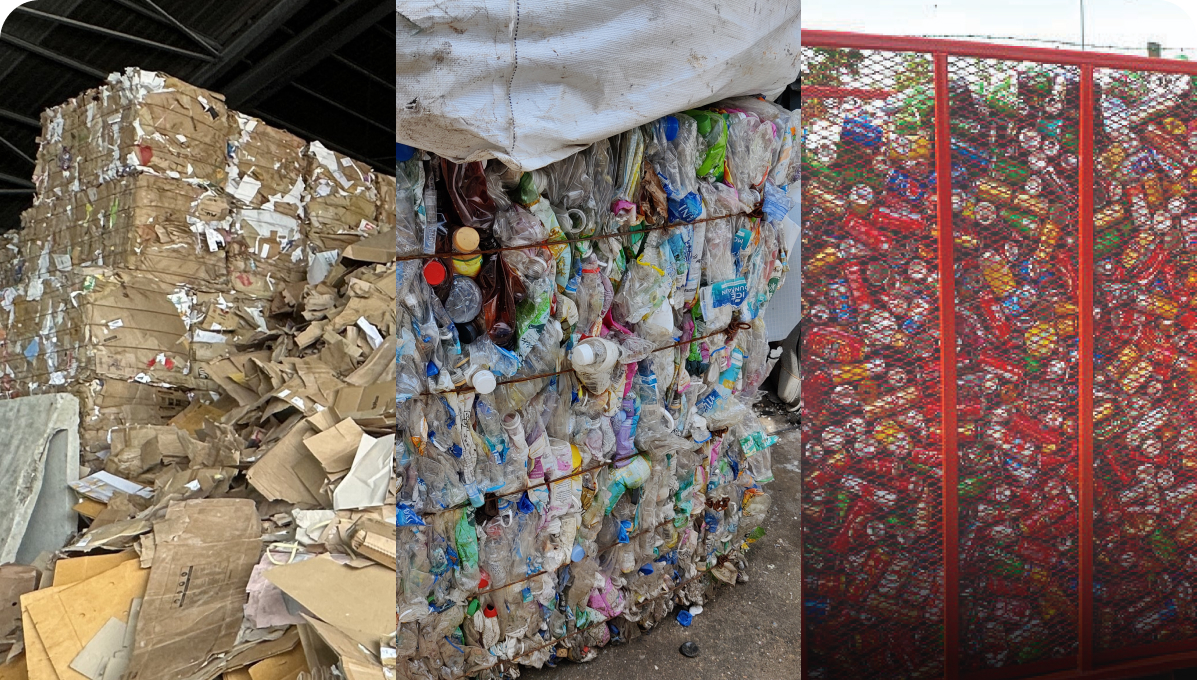
We have conducted site visits to our recycling collectors’ material recovery facilities at Lok Yang Road to check how our recyclables are processed.
Our recycling collectors transport these clean recyclables to local material recovery facilities for baling and consolidation before exporting them to neighbouring countries for recycling.
We will be maximising food waste recycling with a hub and spoke model to transport food waste from various parts of campus to our three onsite composters and a new food waste valoriser. In 2025, we aim to reduce excessive food waste generated from catering. We are also closing plastic waste loops by collecting more types of plastics (e.g., low-density polyethylene) to repurpose as modified bitumen for paving campus roads. By 2025, we strive to achieve 28% recycling rate and 0.16 kg/day/capita as an interim target, by maximising recycling and reducing our total waste generated.
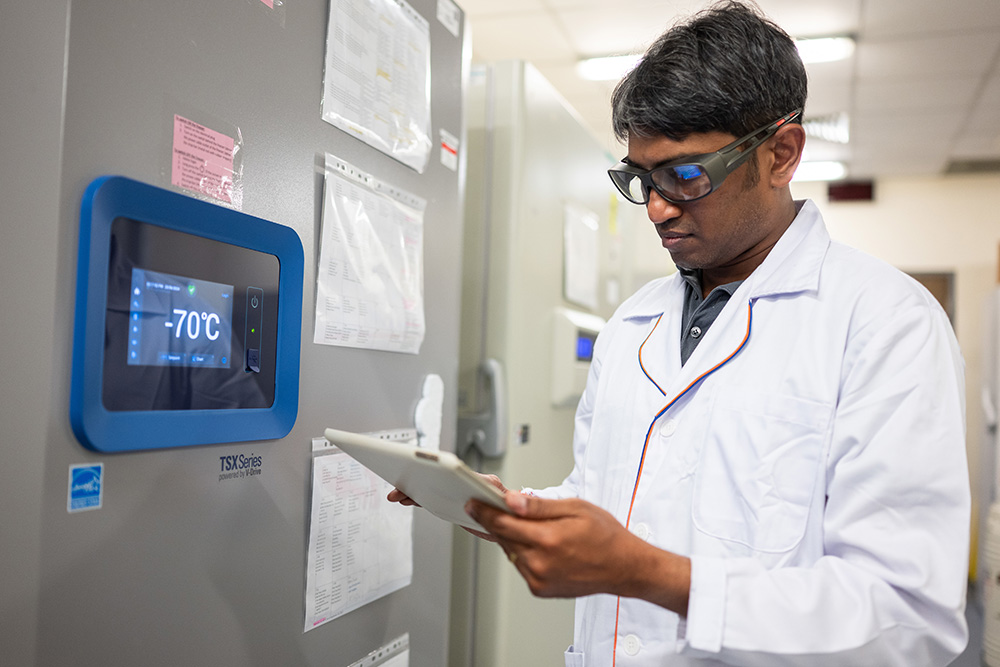
An energy audit conducted in an energy-intensive building highlighted ultra-low temperature freezers (i.e. deep freezers) as a key intervention.
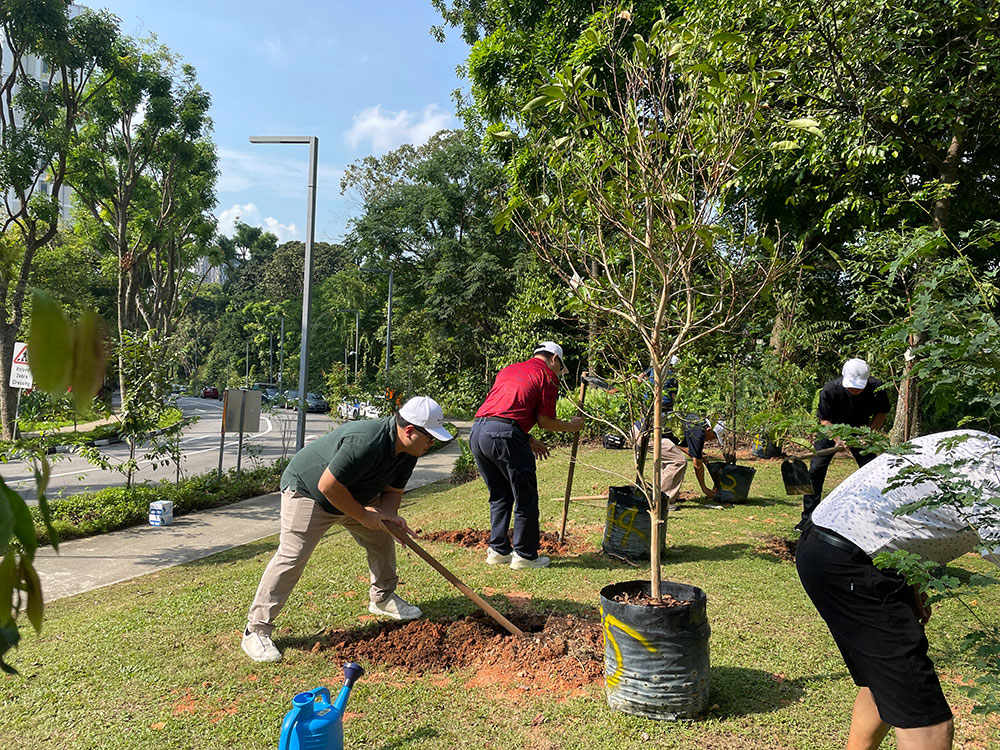
We aim to plant 100,000 trees by 2030, contributing to 10% of Singapore’s OneMillionTrees movement.
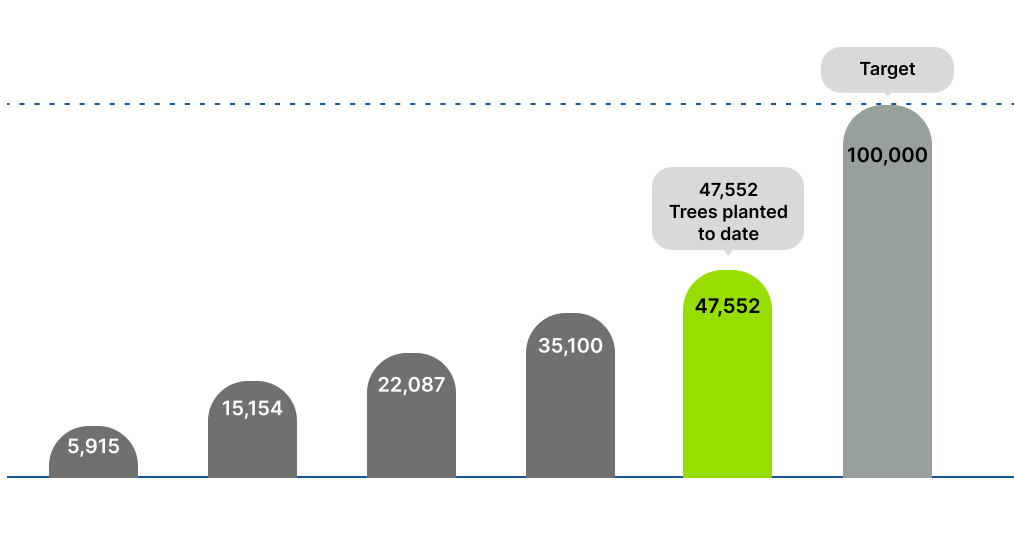
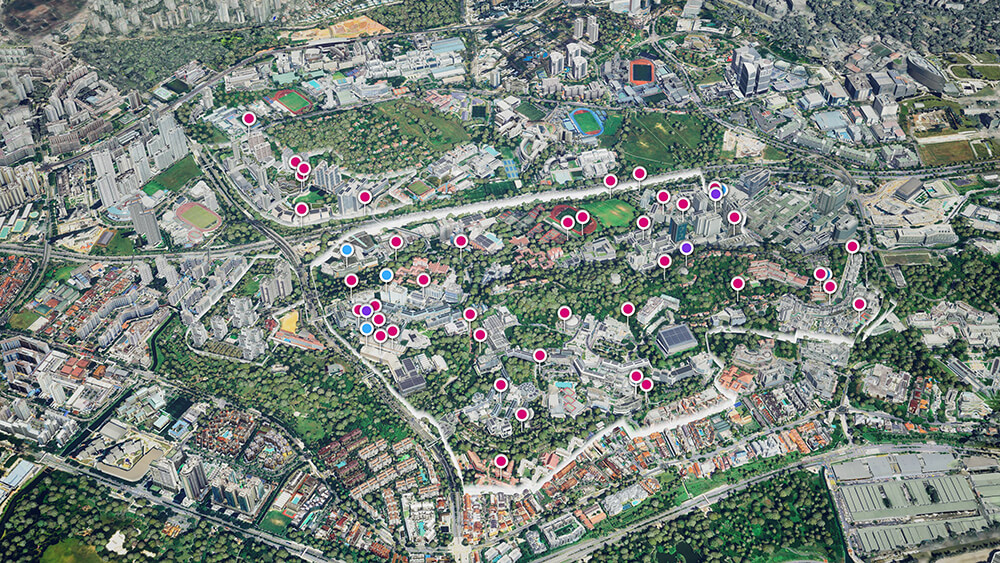
A virtual model of NUS Kent Ridge campus showing micro-climate sensor network of 40 weather stations, 6 infrared cameras and 3 meteorological towers.
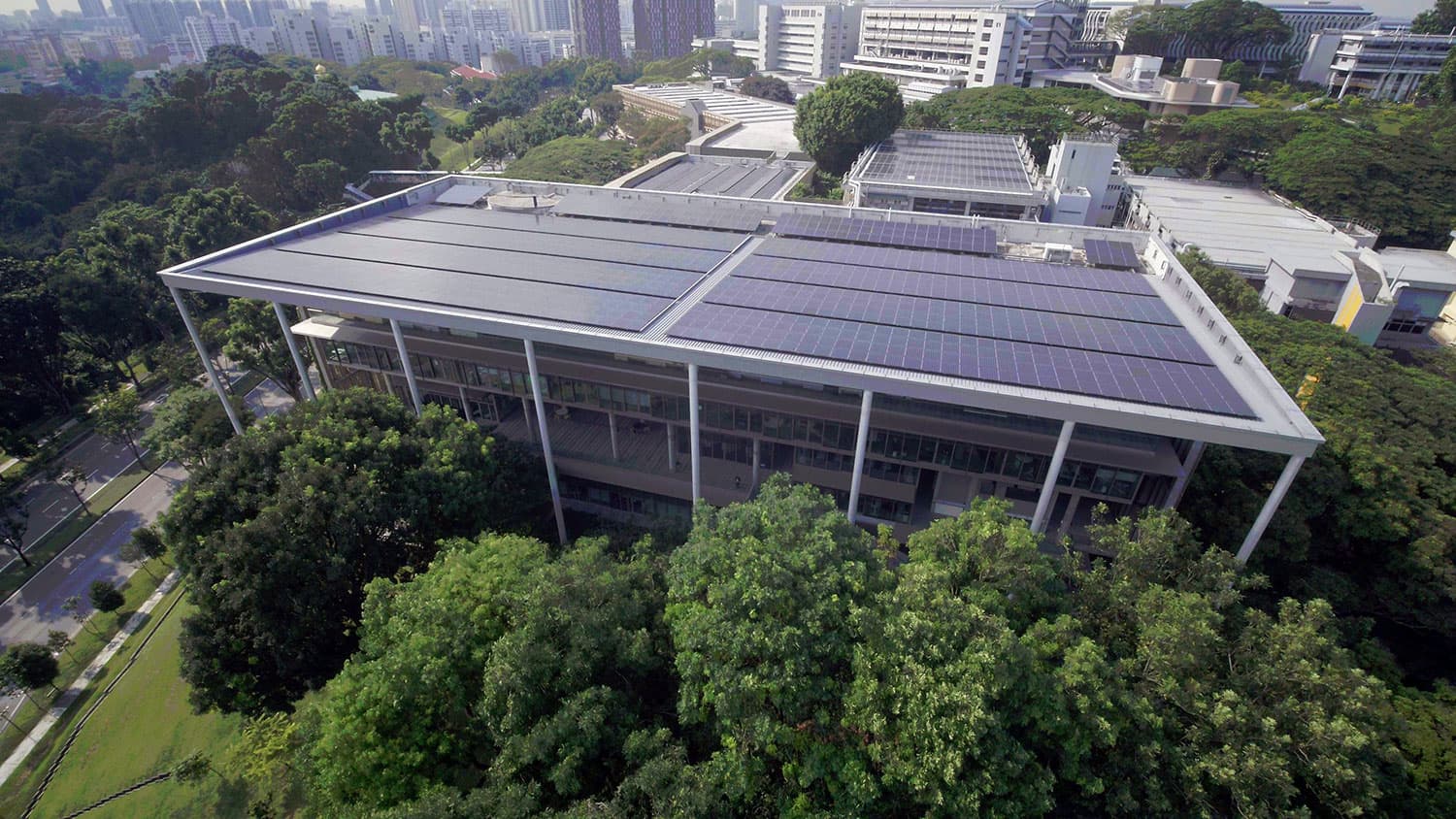
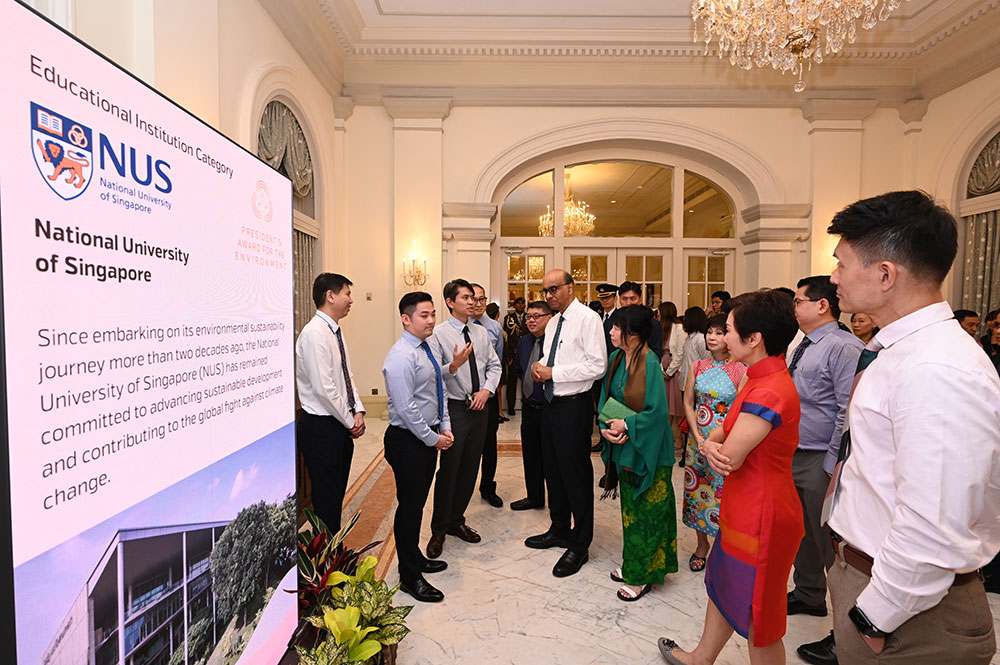
At President’s Award for Environment 2023 award ceremony, we shared our net zero energy design philosophy with President Tharman Shanmugaratnam and guests, including Mr Tharman’s spouse Ms Jane Ittogi, Senior Minister of State for Sustainability and the Environment Dr Amy Khor, Minister for Sustainability and the Environment Ms Grace Fu and Senior Parliamentary Secretary Mr Baey Yam Keng.
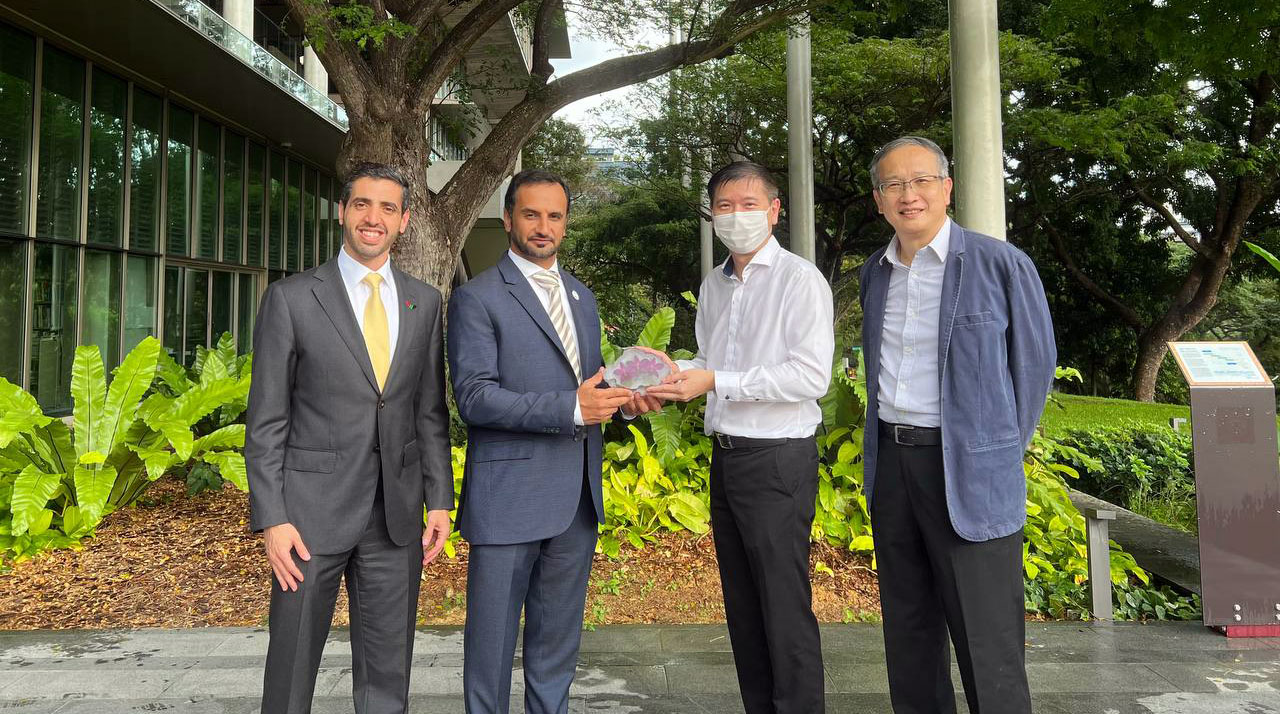
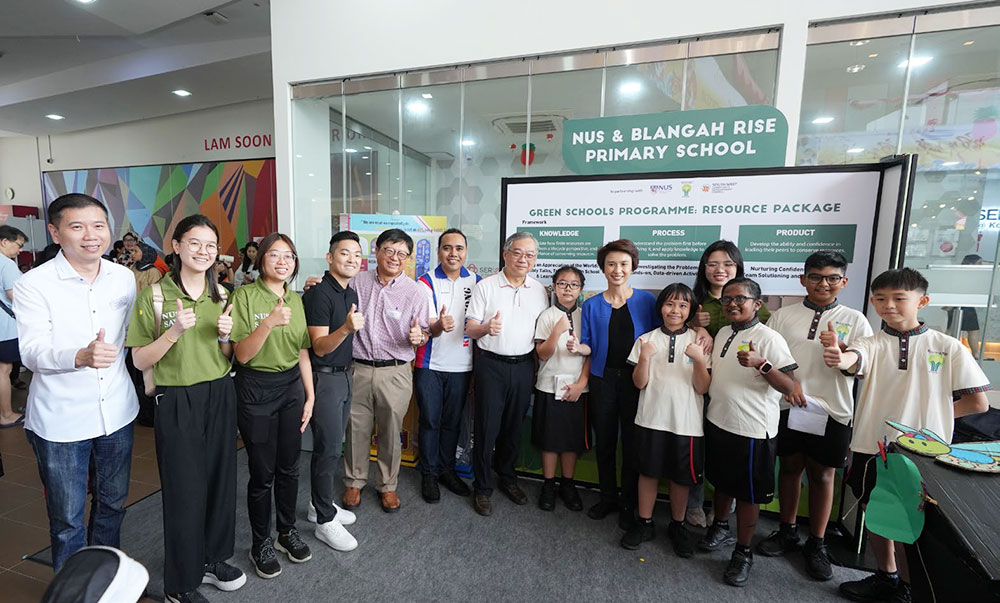
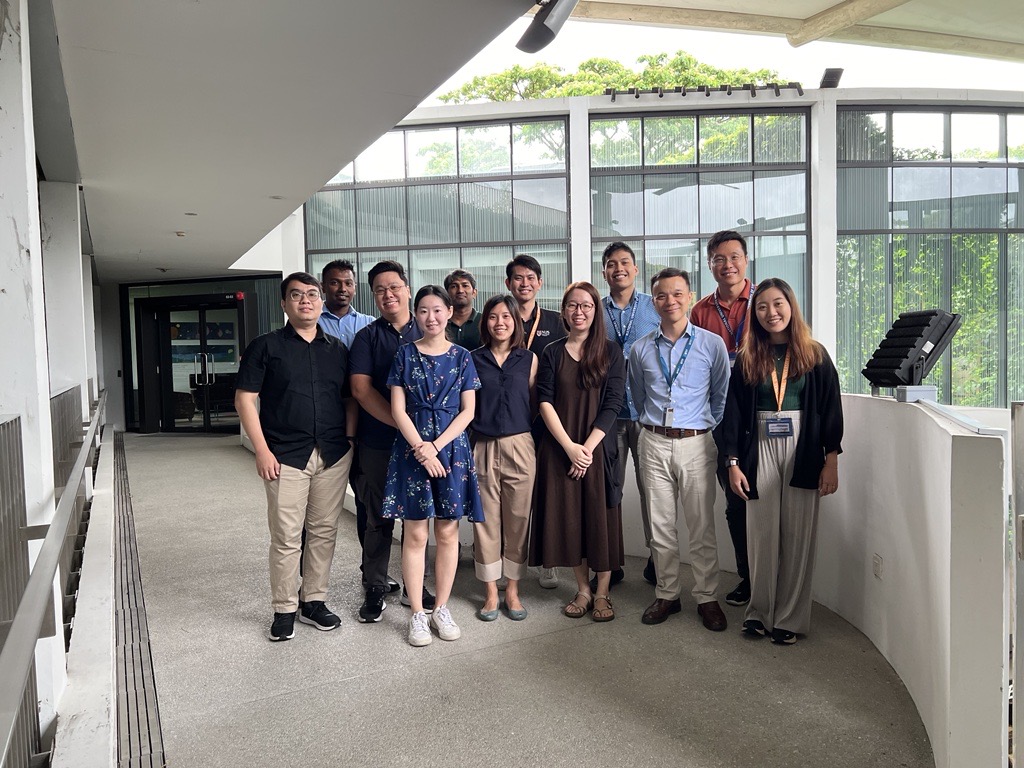
Meeting with Nanyang Technological University (NTU) sustainability team in 2024.
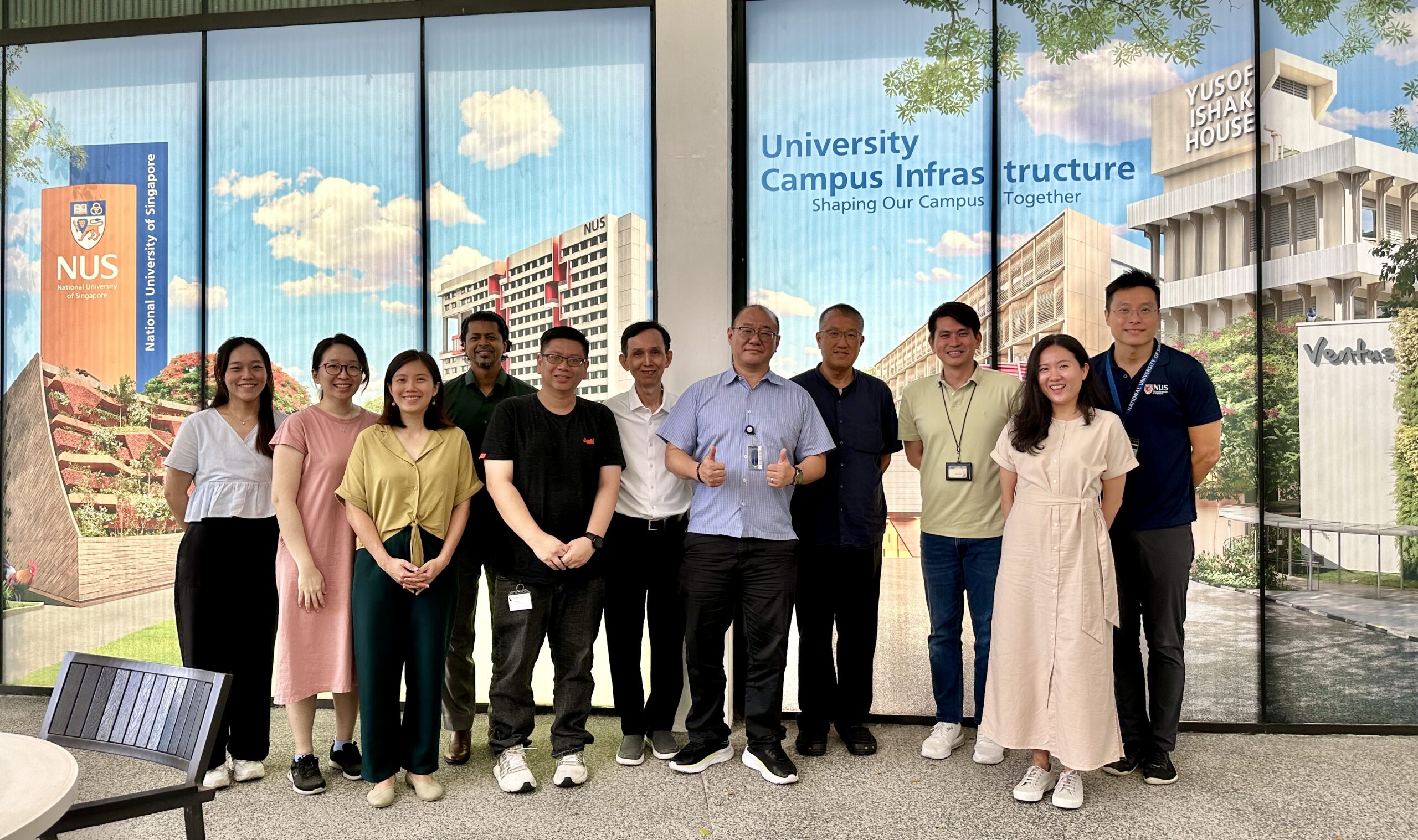
Meeting with Singapore Management University – Office of Campus Infrastructure and Services (OCIS) in August 2025.
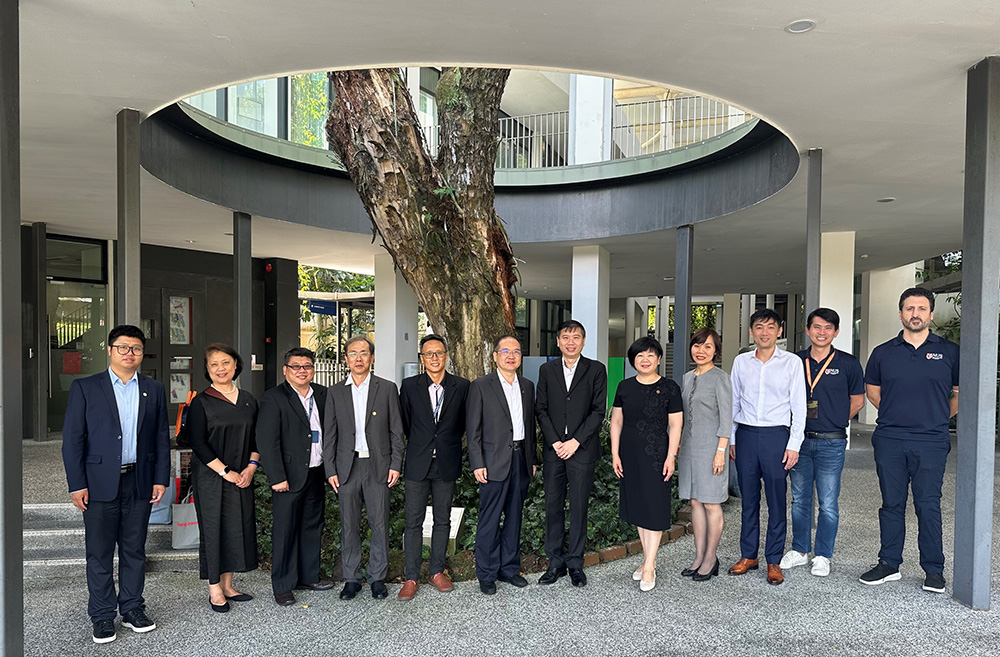
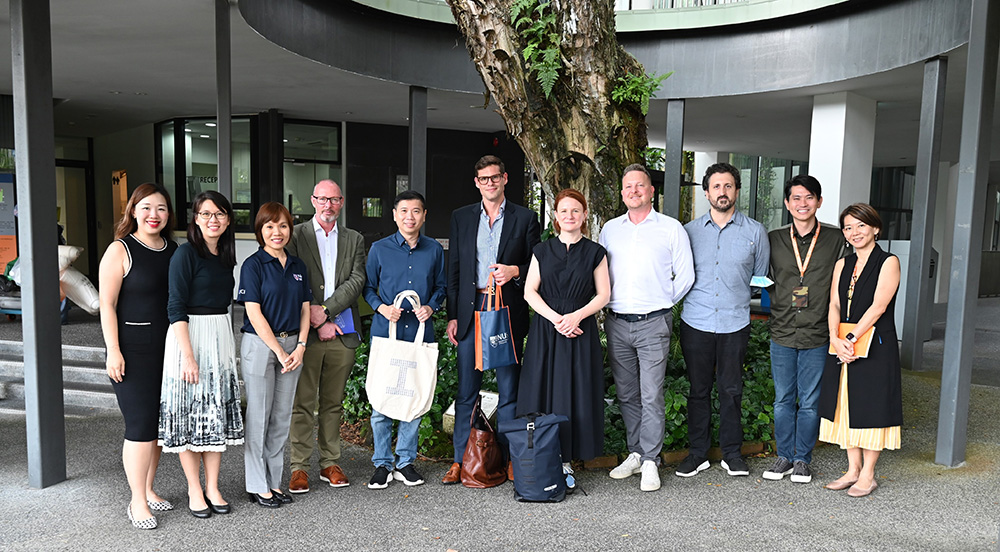
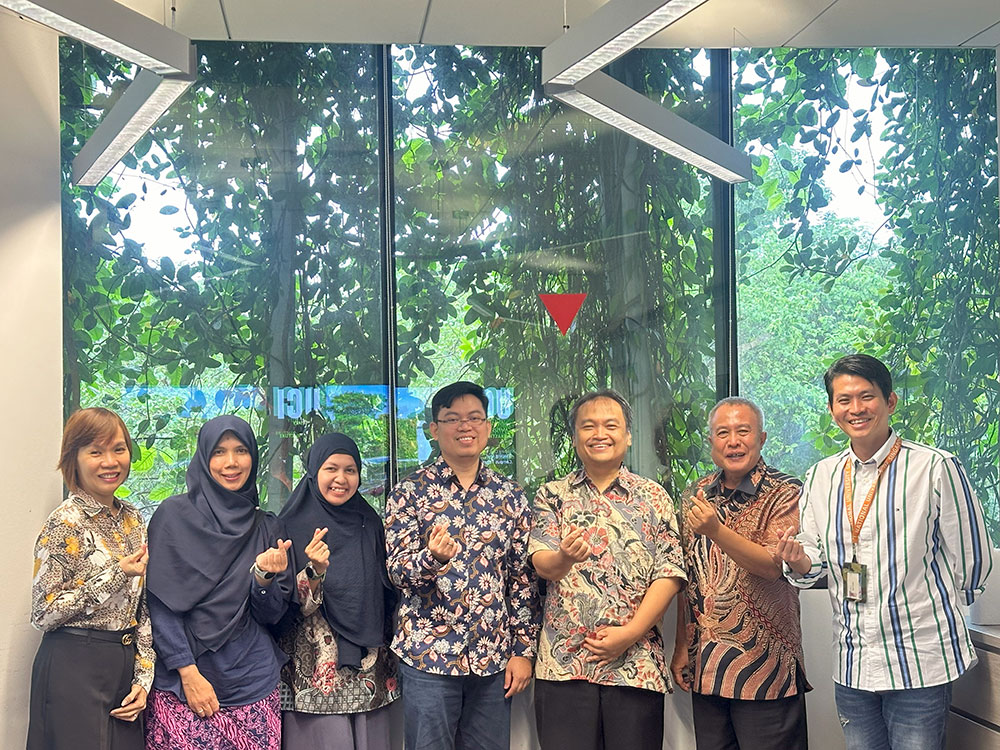
Hosted Institut Teknologi Bandung in June 2024.

Hosted University of Copenhagen in February 2025.
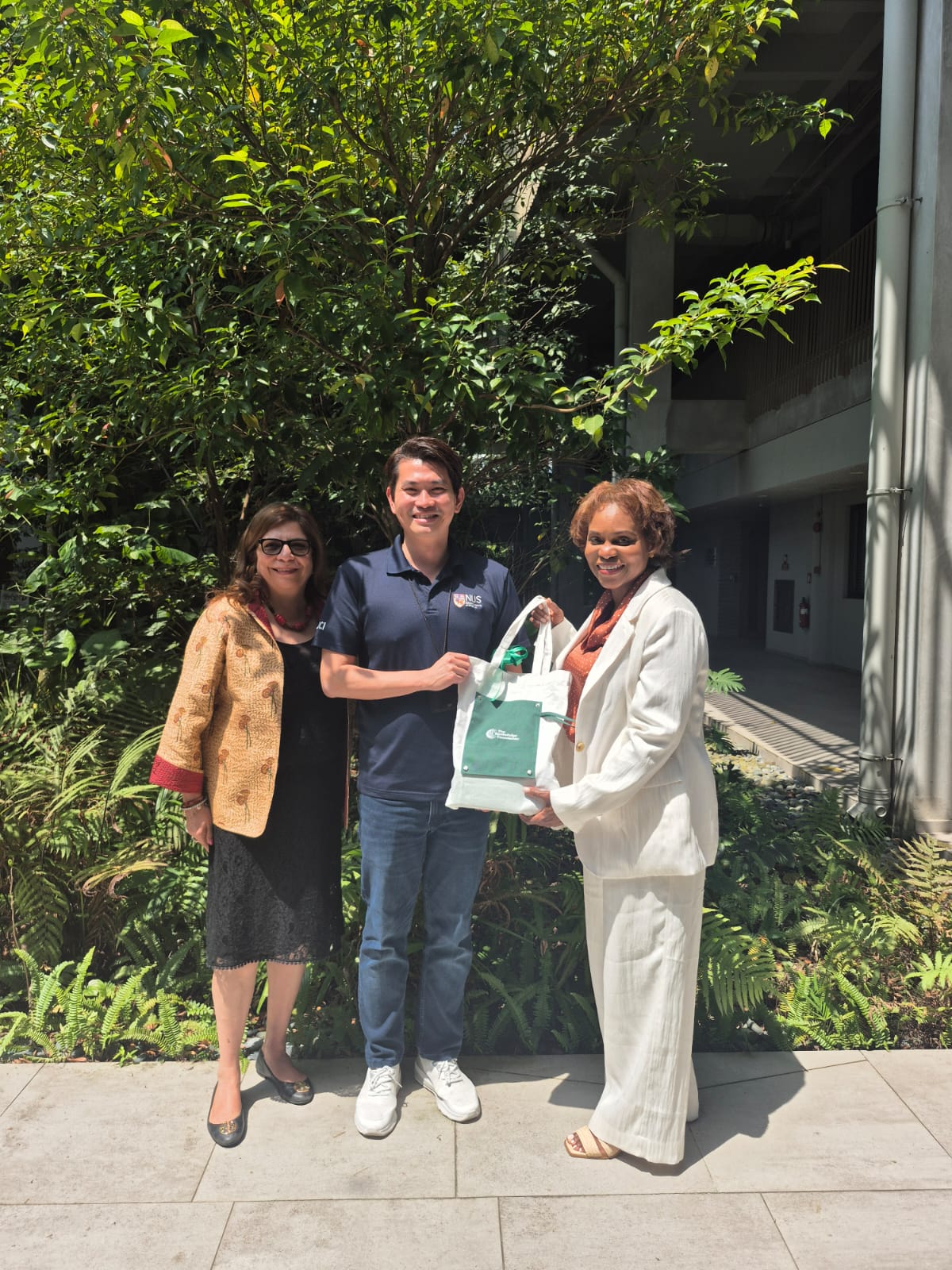
Hosted The Rockefeller Foundation in March 2025.

SDE4 is the first purpose-built net-zero energy building in Singapore.


We are striving to maximise our solar capacity to 14 MWp by 2030 through higher efficiency solar panel technology and increased roof top coverage.
While new buildings have achieved Green Mark (GM) Platinum and above certifications in design, we are also optimising the energy consumption in these buildings during operations. By 2025, we strive to beat the increase and achieve 118 ktCO2e as an interim target, aiming for 7.5 ktCO2e reduction through green lab initiative and commissioning campus-wide rooftop solar panels.
